Don't wanna be here? Send us removal request.
Text
How AI is Improving Supply Chain Efficiency and Transparency
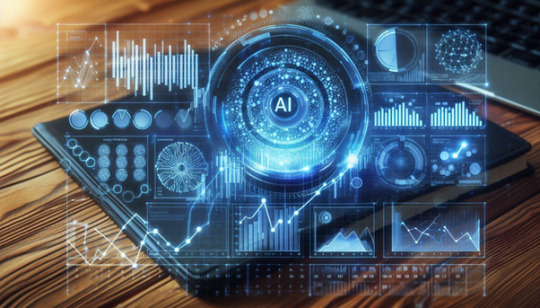
The world of supply chains is evolving at a breathtaking pace, and at the forefront of this transformation is Artificial Intelligence (AI). As businesses grapple with growing complexities and customer expectations, AI is emerging as a powerful ally, helping to streamline operations, reduce costs, and enhance transparency. In this blog, we’ll delve into how AI is reshaping supply chain management and the benefits it brings to companies and consumers alike.
What is AI in Supply Chain Management?
AI is essentially the ability of machines to mimic human intelligence. In the context of supply chains, this means utilizing technologies like machine learning, predictive analytics, and natural language processing to analyze vast amounts of data and make smarter decisions.
Imagine AI as a highly-skilled assistant that can sift through mountains of information, identify trends, and provide insights that help businesses operate more efficiently. For instance, when companies use AI, they can predict demand, optimize delivery routes, and even manage inventory in real-time.
Key Technologies Driving AI in Supply Chains:
● Machine Learning: This enables systems to learn from data and improve over time without being explicitly programmed.
● Predictive Analytics: By analyzing historical data, businesses can forecast future trends and make informed decisions.
● Natural Language Processing (NLP): This technology helps machines understand and interpret human language, making customer interactions smoother and more effective.
AI equips supply chains with the tools needed to enhance efficiency and decision-making. Next, let’s explore how AI specifically boosts supply chain efficiency.
Boosting Supply Chain Efficiency with AI
When it comes to improving efficiency, AI offers several game-changing applications:
● Demand Forecasting: AI algorithms can analyze past sales data, market trends, and even external factors like weather to accurately predict future demand. This means businesses can stock the right amount of inventory, minimizing both overstocking and stockouts.
● Inventory Management: With AI, companies can automate the tracking of inventory, giving them real-time visibility into stock levels. This not only helps avoid costly overstock situations but also ensures that customers get their orders on time.
● Logistics Optimization: Imagine being able to find the fastest route for your deliveries in a matter of seconds. AI-powered logistics tools do just that by analyzing traffic patterns, weather, and delivery schedules to optimize routes. This leads to faster deliveries and reduced fuel costs.
● Supplier Management: AI can evaluate supplier performance, helping businesses identify reliable partners and negotiate better terms. This ensures a smoother supply chain experience.
AI transforms supply chain operations by automating processes and enabling smarter decision-making. In the next section, we’ll discuss how AI enhances transparency in supply chains.
Enhancing Transparency in Supply Chains with AI
Transparency is essential in today’s supply chains. Customers want to know where their products come from, and businesses need to maintain trust with their stakeholders. AI plays a significant role in improving visibility across the supply chain:
● Real-time Tracking: With AI solutions, companies can monitor shipments in real-time. This allows them to provide updates on delivery status, which keeps customers informed and satisfied.
● Blockchain Integration: Combining AI with blockchain technology can create a secure and immutable record of every transaction. This means that customers can trace the origin of their products, enhancing accountability and trust.
● Data Analytics for Accountability: AI can analyze data from various points in the supply chain to identify discrepancies or inefficiencies. By addressing these issues proactively, businesses can uphold their commitment to transparency.
By leveraging AI, businesses can build trust with consumers through enhanced visibility and accountability. Now, let’s look at the numerous benefits AI brings to supply chain management.
The Benefits of AI in Supply Chain Management
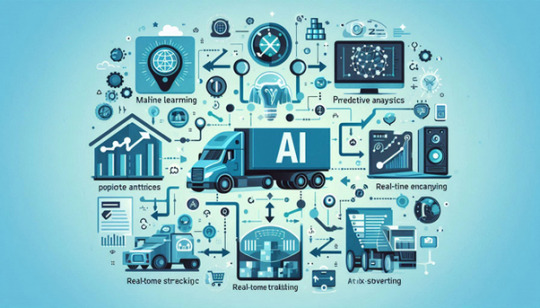
Integrating AI into supply chains isn’t just about staying competitive; it also brings tangible benefits that can significantly impact a business’s bottom line:
● Cost Savings: Optimizing inventory levels and improving logistics can lead to substantial cost reductions. AI helps identify areas where money can be saved.
● Increased Efficiency: Automating routine tasks allows employees to focus on more strategic initiatives. This boosts overall productivity and employee satisfaction.
● Improved Customer Experience: AI-driven demand forecasting and real-time tracking result in more accurate order fulfillment and faster deliveries. Happy customers are more likely to return.
● Data-Driven Insights: With AI, organizations gain access to valuable insights that can guide strategic decisions. This helps businesses adapt to market changes and customer preferences more effectively.
The advantages of AI in supply chains are clear, driving efficiency, reducing costs, and enhancing customer satisfaction. In the next section, we’ll highlight some real-world examples of how companies are successfully using AI in their supply chains.
Real-World Examples of AI in Supply Chains
Many companies are successfully integrating AI into their supply chain operations, showcasing the technology’s potential:
● Amazon: Known for its innovative approach, Amazon uses AI to analyze customer purchasing behaviors. This helps the company forecast demand and manage inventory, ensuring timely deliveries to its customers.
● Walmart: Walmart leverages machine learning to enhance its logistics operations. By predicting customer demand and optimizing delivery routes, the retail giant has reduced transportation costs and improved service levels.
● DHL: DHL employs predictive analytics for warehouse management. This allows for real-time inventory tracking, which significantly enhances operational efficiency.
● Unilever: By integrating AI with blockchain technology, Unilever has improved supply chain transparency. This enables consumers to trace product origins and ensures ethical sourcing practices.
These examples illustrate the transformative impact of AI on supply chain efficiency and transparency. Finally, let’s discuss what the future holds for AI in supply chain management.
The Future of AI in Supply Chain Management
As AI continues to evolve, its potential for enhancing supply chain operations is bound to grow. Here are a few trends to watch for:
● Advanced Robotics: Automated systems in warehouses will streamline processes, allowing for quicker order processing and reducing reliance on manual labor.
● Predictive Maintenance: AI will play a key role in predicting equipment failures, enabling companies to perform maintenance proactively, thereby minimizing downtime.
● Enhanced Collaboration: AI tools will facilitate better collaboration among supply chain partners, fostering improved communication and synchronized operations.
● Sustainability Initiatives: As sustainability becomes a top priority, AI will help companies optimize their supply chains to reduce waste and lower carbon footprints.
The future of AI in supply chain management promises exciting advancements that will drive efficiency and sustainability. To summarize, let’s recap the key points we’ve discussed.
AI Certifications for Supply Chain Professionals
If you're keen on expanding your knowledge of AI applications in supply chain management, various certifications can provide you with the tools and insights needed to thrive in this evolving field:
AI CERTs AI+ Product Manager™ Certification The AI+ Product Manager™ Certification from AI CERTs offers a comprehensive foundation in AI tailored for product management. It covers AI fundamentals, machine learning, AI product development lifecycle, ethics, and strategies for integrating AI into products. Participants learn about AI metrics, performance evaluation, and regulatory compliance, preparing them to manage AI-driven products effectively. This certification equips product managers to leverage AI for innovation and market-driven solutions. Link: AI+ Product Manager™
Certified Supply Chain Professional (CSCP) Offered by APICS, this program dives into supply chain processes and the integration of AI to improve efficiency and effectiveness. It covers key topics, such as supply chain design and planning. Link: Supply Chain Professional
AI and Data Science for Supply Chain by Coursera This course teaches participants how to leverage AI and data science to tackle real-world supply chain challenges, including demand forecasting and inventory optimization. Link: Supply Chain by Coursera
AI in Supply Chain by MITx This course provides insights into the impact of AI on supply chains, offering case studies and practical applications to help professionals implement AI solutions. Link: AI in Supply Chain by MITx
AI & Robotics for Supply Chain Management by edX This certification covers the role of AI and robotics in supply chains, emphasizing efficiency and automation, and equipping professionals with the skills needed for modern supply chain management. Link: Supply Chain Management by edX
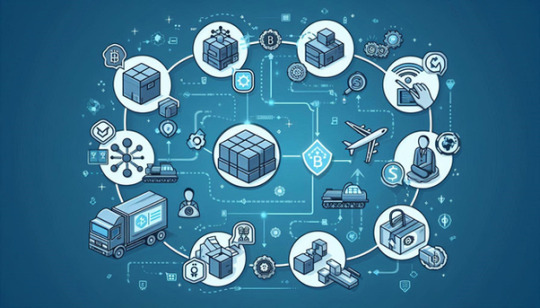
Pursuing AI certifications can empower supply chain professionals to effectively implement cutting-edge technologies, enhancing both individual and organizational performance. Now, let’s address some frequently asked questions about AI in supply chains.
Frequently Asked Questions (FAQ)
1. How does AI improve supply chain efficiency? AI enhances supply chain efficiency by automating routine tasks, optimizing inventory levels, and providing accurate demand forecasts, leading to reduced costs and improved service.
2. What are the primary benefits of AI in supply chain management? Key benefits include cost savings, increased operational efficiency, improved customer satisfaction, and data-driven decision-making.
3. How can AI increase transparency in supply chains? AI facilitates real-time tracking, integrates with blockchain for enhanced traceability, and analyzes data for accountability, ensuring all stakeholders have visibility into supply chain operations.
4. Are small businesses able to benefit from AI in their supply chains? Absolutely! Small businesses can use AI to streamline processes, manage inventory effectively, and improve customer service, helping them remain competitive.
5. What does the future hold for AI in supply chain management? The future of AI in supply chains includes advancements in robotics, predictive maintenance, enhanced collaboration among partners, and a strong focus on sustainability initiatives.
Conclusion
AI is fundamentally reshaping the landscape of supply chain management, driving efficiency and fostering transparency. By embracing AI technologies and pursuing relevant certifications, professionals can position themselves for success in this rapidly evolving industry. As we continue to innovate and explore the potential of AI, the opportunities to enhance supply chains are boundless.
"Have questions or want to learn more about our certifications? Contact us today at AI CERTs and take the first step toward advancing your AI expertise!"
#techcertifications#careergrowth#certificationguide#explore#reblogs#inspiration#professionaldevelopment#top10certifications#creativity
0 notes
Text
AI in Customer Service: How It’s Changing the Way Businesses Help You
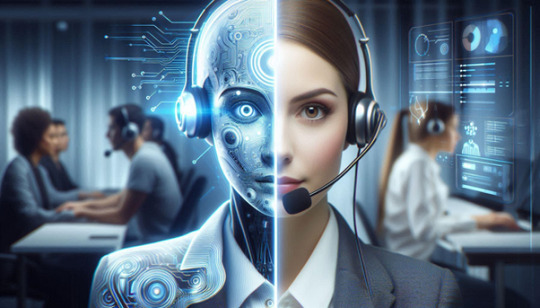
Have you ever contacted a company and wondered, “Am I chatting with a real person or a robot?” If you’ve asked yourself this, you’re not alone! Artificial Intelligence (AI) is becoming a bigger part of customer service, and it’s making a huge difference in how businesses respond to you. From chatbots and virtual assistants to tools that predict what you need, AI is transforming the way companies engage with customers like never before.
The Growing Role of AI in Customer Service
AI has come a long way in customer service, and it’s not just about robots answering your questions anymore. These days, AI tools can manage entire conversations, predict what you might need help with, and even solve problems before you realize you have them! Think about how Amazon helps you track orders, or how Sephora helps you pick the perfect makeup shade online all with AI.
What’s exciting is that AI makes things faster and more efficient for everyone. So, the next time you get quick help online, there’s a good chance AI is behind it, working to make things easier for you. In the next section, we’ll look at how AI is being used by businesses to make customer service better.
Real-World Examples of AI in Action
Automated Ticketing: Have you ever had a problem and received an instant response, saying your issue is being handled? That’s likely AI in action. Companies like Zendesk use AI to categorize and route customer problems, making sure they reach the right person quickly.
Sentiment Analysis: Some companies use AI to understand how customers feel based on what they say online. Coca-Cola, for example, keeps track of what people are saying about them on social media using AI, so they know when something needs attention or when people love their product.
Personalized Recommendations: If you use Netflix or Spotify, you’ve probably noticed that they seem to know exactly what you’ll enjoy watching or listening to. That’s AI analyzing your habits and suggesting content tailored to your tastes!
Fraud Detection: AI isn’t just about answering questions it can also protect you. PayPal uses AI to detect any unusual activity in your account, helping to prevent fraud before it becomes a big issue.
AI is already doing a lot to make customer service faster, smarter, and more personal. As more businesses adopt these tools, your experience as a customer will keep getting better. Next, let’s dive into the benefits AI brings to customer service.
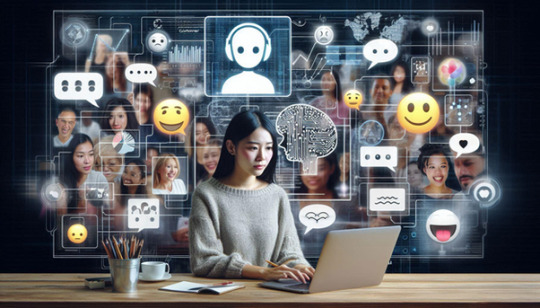
● Saving Time and Money: One of the biggest reasons companies love AI is that it saves both time and money. For example, chatbots can handle lots of questions at once, meaning businesses don’t need as many people working the phones. Juniper Research even predicts that by 2023, AI-powered chatbots will save businesses over $11 billion every year!
● Always Available: AI doesn’t need breaks or sleep. Companies like H&M use chatbots that are available 24/7, so you can get help no matter when you need it whether it’s day or night.
● Consistent Answers: Ever had two customer service agents give you different answers? AI avoids this by always giving the same, accurate information. AT&T uses AI to make sure every customer gets consistent, reliable service.
● Scaling Up: As companies grow, AI helps them handle more customers without losing quality. Bank of America’s virtual assistant, Erica, talks to thousands of customers a day, providing helpful, fast answers to everyone.
● Predicting Problems: Some companies, like Tesla, use AI to predict when something might go wrong before you even notice. That way, they can alert you and fix the problem early, which makes your life easier.
The benefits of AI are hard to ignore. Whether it’s cutting down wait times, being available around the clock, or ensuring you always get the right information, AI is making customer service better in ways that matter to you. But even with all these perks, AI does have some challenges. Let’s look at those next.
The Challenges of AI in Customer Service
Even though AI is amazing, it’s not perfect. Here are a few things that still need work:
● No Personal Touch: Sometimes, you just need to talk to a real person. While AI can handle simple questions, it might not do well when it comes to complex or emotional issues. For instance, Nordstrom uses AI for quick fixes but makes sure a human is there to help with trickier problems.
● It’s Expensive at First: Setting up AI tools can cost a lot of money. IBM Watson, for example, offers super-smart AI services, but smaller businesses might struggle to afford it initially.
● Privacy Concerns: AI often needs access to personal data to work well, which raises privacy concerns. In 2021, Facebook had a big data breach, reminding companies and customers alike how important it is to protect user data.
● Too Much Automation: Over-relying on AI can make customers feel disconnected. Zappos, for example, keeps a balance by using AI for some tasks while still having humans handle more personalized interactions.
AI can’t do everything at least, not yet. It’s great for handling basic tasks, but human interaction is still essential, especially when it comes to more complicated situations. Let’s now explore how you can boost your skills with AI certifications for customer service.
Want to Get Ahead? Check Out These AI Certifications
If you’re interested in learning how AI is changing customer service and how you can be part of that change there are some great certifications available. Here are a few worth checking out:
● AI+ Customer Service Certification from AI CERTs: This course is all about using AI to improve customer service, covering everything from chatbots to analytics.
● AI for Business Professionals on Coursera: Perfect for people who want to understand how AI can enhance business operations, including customer service.
● AI Fundamentals by Microsoft: A beginner-friendly certification that covers AI basics and how it can be applied to automate customer service.
● AI & Machine Learning in Customer Experience by Udacity: This course focuses on using AI to create better customer experiences.
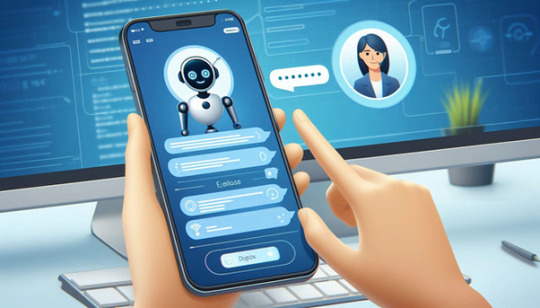
These certifications can give you a leg up in understanding AI and how it’s shaping the future of customer service. It’s a great way to stay competitive in a world where technology is constantly changing. Finally, let’s wrap things up with a quick conclusion.
Wrapping It All Up
AI is changing the way businesses interact with their customers, making service faster, more efficient, and more personalized. Whether it’s answering questions, predicting your needs, or helping prevent problems, AI is playing a big role in making sure customers get the support they need. However, it’s important to strike a balance AI is great, but sometimes, you still need that human touch.
In short, AI is revolutionizing customer service, but the best experiences come when companies mix technology with empathy. The future is exciting, and AI is here to make it even better! And that’s a wrap on how AI is shaping the future of customer service!
FAQ: Common Questions About AI in Customer Service
As AI continues to revolutionize customer service, many people have questions about how it works and what it means for their interactions with businesses. Below are some frequently asked questions (and answers!) to help clear up any confusion:
Q1: Will AI replace human customer service agents? While AI is incredibly useful for handling routine inquiries and providing quick responses, it’s unlikely to completely replace human agents. Many companies use a combination of AI and human support to balance efficiency with personalized service. For complex or emotionally charged issues, people still prefer talking to a real person.
Q2: How do chatbots work in customer service? Chatbots use AI to understand and respond to customer queries. They’re programmed to recognize certain keywords and phrases, allowing them to provide relevant answers or guide users to the information they need. Many chatbots are also equipped with machine learning, which helps them improve over time based on past interactions.
Q3: Are my conversations with AI tools private? Privacy is a major concern when it comes to AI, especially since these tools often rely on customer data. Reputable companies prioritize data security and follow regulations to protect your information. However, it’s always wise to check a company’s privacy policy to understand how your data is being used.
Q4: Can AI understand emotions or respond empathetically? AI is getting better at analyzing customer sentiment through natural language processing (NLP), which helps it recognize emotions based on the words you use. However, it’s not quite the same as human empathy. Some businesses use AI for initial contact but transfer you to a human agent for more sensitive issues.
Q5: Is AI used in customer service only for big companies? Not at all! While big companies like Amazon and Google are known for using AI, many small and medium-sized businesses are adopting AI-powered tools to improve their customer service. Solutions like chatbots and automated ticketing systems are becoming more affordable and accessible to businesses of all sizes.
“Have questions or are ready to take the next step in your AI certification journey? Reach out to us at AI CERTs — our team is here to guide you every step of the way!”
#careeradvancement#careergrowth#certificationguide#explore#reblogs#inspiration#top10certifications#techcertifications#professionaldevelopment#creativity
0 notes
Text
AI for Good: How Artificial Intelligence is Solving Global Challenges
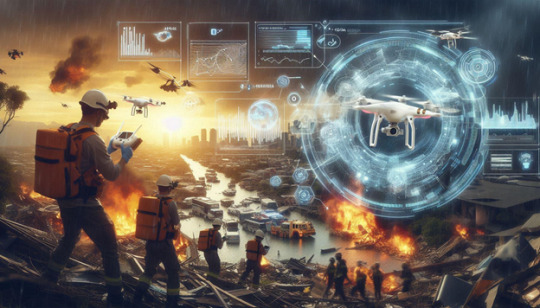
When people think of AI, they often imagine futuristic robots or cutting-edge technologies that seem far removed from the everyday issues affecting our planet. However, AI is more than a tech buzzword it’s becoming an essential tool for tackling global challenges. From healthcare innovation to combating climate change and improving education, AI is increasingly being used to improve lives worldwide.
In this blog, we’ll dive into some of the incredible ways AI is making a difference today, and explore how you, too, can contribute by earning certifications that align with AI for Good.
AI in Healthcare: Enhancing Diagnosis and Access to Care
AI’s impact on healthcare is profound. Whether improving medical diagnostics or streamlining patient care, AI empowers healthcare professionals and saves lives. For example, AI algorithms can analyze medical images for conditions like cancer, outperforming even the most experienced radiologists in some cases. In rural or underdeveloped regions, AI-powered health apps are providing remote diagnosis and personalized care advice to patients who might not otherwise have access to healthcare.
A great example of this is Babylon Health, a healthcare app that uses AI to diagnose patients based on symptoms and medical history. In Rwanda, this app has improved access to healthcare services, particularly in remote areas with a limited number of doctors. AI is also being employed in predictive analytics, helping doctors anticipate complications and tailor treatments to individual patients based on historical health data.
Real-World Impact:
● Medical Imaging: AI-powered systems like those used by Zebra Medical Vision can detect diseases like breast cancer, osteoporosis, and liver conditions at an early stage, enabling early treatment and better patient outcomes.
● Telemedicine: Platforms such as Ada Health and Your.MDs are providing AI-driven diagnostic tools that empower patients to understand their symptoms and seek appropriate treatment.
AI is making healthcare more accessible and accurate, saving lives by ensuring timely diagnoses and personalized treatment options.
In the next section, we’ll explore how AI is playing a vital role in addressing climate change.
Tackling Climate Change with AI: A Powerful Ally in Sustainability
Climate change is an urgent crisis, and AI is increasingly being used to combat its devastating effects. From optimizing energy use to monitoring deforestation, AI tools are helping governments, businesses, and non-profits reduce their environmental footprint.
One major area where AI is making a difference is in renewable energy optimization. AI models help predict wind and solar energy output based on weather conditions, improving energy grid efficiency. This not only helps reduce waste but also makes renewable energy sources more reliable. For example, Google’s DeepMind has used AI to increase the efficiency of wind farms by predicting wind patterns and optimizing energy storage.
Another key area is deforestation monitoring. AI models analyze satellite imagery to track illegal logging and deforestation patterns in real-time, helping governments and organizations act faster to prevent further damage. The Rainforest Connection uses AI to monitor the sounds of chainsaws and trucks in protected forests, allowing real-time intervention.
Real-World Impact:
● Carbon Emission Tracking: IBM’s AI-powered tools help companies track and reduce their carbon footprint by analyzing emissions data and suggesting optimizations in supply chains.
● Wildlife Conservation: AI systems like PAWS (Protection Assistant for Wildlife Security) use predictive models to identify poaching hotspots and deploy patrols in vulnerable areas, protecting endangered species like elephants and rhinos.
AI’s role in fighting climate change is expanding, and its ability to analyze massive datasets in real time makes it a crucial tool in environmental sustainability.
In the next section, we’ll discuss how AI is revolutionizing disaster response and humanitarian aid.
Humanitarian Aid and Disaster Response: Speed, Precision, and Data-Driven Action
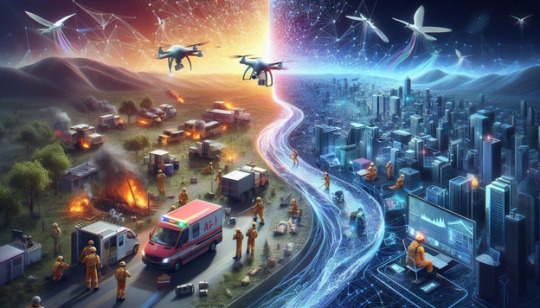
When disasters strike, a timely and effective response can mean the difference between life and death. AI is now being deployed to improve disaster response, making it faster and more accurate than ever before. By analyzing satellite images, AI can pinpoint areas that are most in need of help, allowing rescue teams to act with precision.
During Hurricane Harvey in 2017, AI was used to scan aerial imagery and map the areas most affected by flooding. This allowed rescue teams to prioritize those regions for assistance. Similarly, AI-driven systems can predict where future natural disasters, like floods or wildfires, are likely to occur, helping governments and aid organizations prepare in advance.
AI is also playing a crucial role in humanitarian aid. For instance, the UN World Food Programme (WFP) uses AI to optimize food distribution in conflict zones. By analyzing factors like local population density, road accessibility, and weather patterns, AI helps ensure that food reaches the people who need it most in the shortest time possible.
Real-World Impact:
● Disaster Mapping: AI tools like Global Forest Watch and Planet AI use satellite data to assess damage and predict future risks, helping teams coordinate disaster response.
● Aid Optimization: The Red Cross is experimenting with AI to predict the movement of displaced populations in times of crisis, ensuring resources are delivered to the right areas before the need arises.
AI-driven data models are transforming the way humanitarian organizations operate, making disaster response and aid distribution faster and more efficient.
In the next section, we’ll explore how AI is reshaping the future of education.
AI in Education: Personalized Learning for a Global Audience
AI is not only transforming industries like healthcare and disaster response; it’s also revolutionizing education. By offering personalized learning experiences, AI ensures that every student gets the attention and resources they need to succeed. Adaptive learning platforms are one example of this. These systems use AI to analyze a student’s progress and adjust the curriculum accordingly, ensuring they learn at their own pace.
In underserved areas where teachers are in short supply, AI-powered tutors are stepping in to provide interactive lessons and real-time feedback. For example, apps like Duolingo and Khan Academy are using AI to personalize lessons, allowing learners to improve their skills in a way that best suits them. In countries with large populations of non-native English speakers, AI-driven tools like Elsa Speak help students master the language faster than traditional methods.
Real-World Impact:
● Tutoring: AI-powered tools like Squirrel AI are offering real-time, personalized tutoring to students in China, helping them prepare for high-stakes exams.
● Learning Accessibility: Platforms like Coursera and Udemy leverage AI to curate course recommendations, making education more accessible to learners worldwide.
AI’s ability to personalize education is breaking down barriers, ensuring students in all parts of the world have access to high-quality learning experiences.
In the final section, we’ll highlight some top certifications that can help you harness the power of AI for Good.
Certifications
To harness AI’s full potential for global good, professionals need the right tools and education. Here are some of the best certifications available:
1. AI for Good Specialization (DeepLearning.AI on Coursera)
This certification provides hands-on learning focused on AI applications in environmental sustainability, humanitarian aid, and more.
● Enroll here
2. AI in Healthcare Specialization (Stanford University on Coursera)
A certification designed to teach the application of AI in diagnostics, drug discovery, and personalized medicine.
● Enroll here
3. AI for Earth Innovation Program (Microsoft AI for Earth)
A unique program offering resources for those using AI to tackle environmental challenges like climate change and biodiversity loss.
● Learn more here
4. AI+ Engineering (AI CERTs)
This certification focuses on designing ethical AI systems with real-world social impact, covering areas like education, healthcare, and financial inclusion.
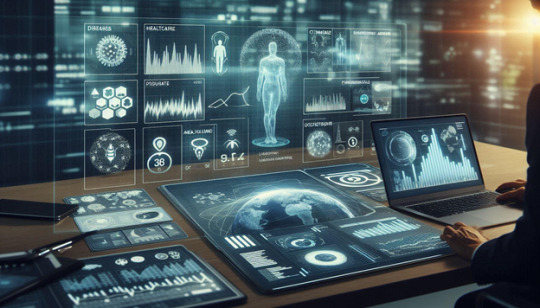
Conclusion
AI is revolutionizing the way we approach global challenges, from healthcare to climate change and education. The ability to process massive amounts of data and deliver real-time insights has made AI a game-changer in addressing some of the most pressing issues of our time. If you’re passionate about making a difference, now is the perfect time to explore how you can leverage AI to help build a better future.
By gaining the right skills through certifications, you can become a part of the global movement to use AI for Good.
FAQ
What is AI and how does it work?
● Artificial Intelligence (AI) refers to the simulation of human intelligence in machines designed to perform tasks that typically require human intellect. This includes learning, problem-solving, decision-making, and understanding language.
What are the benefits of AI in solving global challenges?
● AI can enhance healthcare through disease prediction and diagnostics, optimize agriculture for food security, help in climate change solutions by modeling predictions, and improve education with personalized learning.
How can AI help in climate change?
● AI assists by analyzing environmental data to predict climate changes, optimize energy consumption, and develop sustainable practices in various industries, making climate interventions more efficient.
What industries are most affected by AI?
● AI is transforming industries such as healthcare, finance, manufacturing, education, and transportation, where automation and data-driven insights improve efficiency and outcomes.
Are there certifications to learn AI to address global challenges?
● Yes, there are several certifications available, such as AI for Good certifications from AI CERTs, Data Science certifications, and more specialized programs focused on ethical AI and environmental sustainability.
Have questions or ready to take the next step in your AI certification journey? Reach out to us at AI CERTs our team is here to guide you every step of the way
#techcertifications#careergrowth#explore#reblogs#certificationguide#careeradvancement#professionaldevelopment#inspiration#top10certifications#creativity
0 notes
Text
AI Ethics: Balancing Innovation with Responsibility
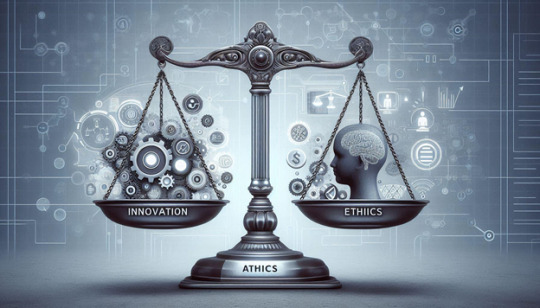
Artificial Intelligence (AI) is transforming industries and enhancing lives, but as its influence grows, so do concerns about the ethical implications of its use. AI is reshaping sectors like healthcare, education, and business, yet this rapid progress brings important questions about fairness, privacy, accountability, and transparency. Striking a balance between innovation and responsibility has never been more important.
This blog explores the key ethical issues surrounding AI and how we can ensure responsible development in this fast-evolving field.
AI: Innovation and Responsibility
AI’s rise has brought both amazing innovations and significant risks. In healthcare, AI-driven tools can diagnose diseases with precision. In finance, AI algorithms predict market trends. But alongside these advancements, AI systems can perpetuate biases and make decisions that affect people’s lives, often without transparency or explanation.
For example, AI-powered recruitment tools may unintentionally prioritize candidates based on biased data, potentially excluding qualified individuals from underrepresented groups. This duality of AI as both a driver of progress and a potential source of harm demands ethical standards that promote fairness and inclusivity.
Key Takeaways:
● AI is shaping industries but requires ethical checks to prevent harm.
● Ethical AI frameworks promote fairness and accountability in their applications.
AI is revolutionizing industries, but with great power comes the need for responsible oversight. Next, we’ll dive into the issue of fairness and bias in AI systems.
Fairness and Bias in AI
One of the biggest ethical concerns in AI is bias. AI systems are trained on data; if that data is biased, the AI can inherit and even amplify those biases. This can have real-world consequences, particularly in areas like criminal justice, hiring, and healthcare.
Consider facial recognition systems, which have shown higher error rates for people with darker skin tones, leading to misidentification and wrongful detainment in some cases. Addressing bias in AI requires diverse datasets, fairness audits, and constant vigilance.
How to address AI bias:
● Use varied and diverse data to train AI systems.
● Regularly audit AI for fairness and inclusivity.
● Increase transparency around AI decision-making processes.
AI systems must be designed with fairness in mind to avoid perpetuating societal biases. In the next section, we’ll explore how privacy and data security are impacted by AI.
Privacy and Data Security

AI thrives on data, but with the increasing need for data comes growing concerns around privacy. AI applications often require access to personal information whether it’s smart assistants learning user preferences or AI tools analyzing health data to offer medical insights.
Without proper safeguards, sensitive data can be misused or leaked, compromising user privacy. Regulations like the General Data Protection Regulation (GDPR) offer some protection, but developers and companies must also take steps to ensure data is encrypted, anonymized, and responsibly managed.
Key steps to secure AI-driven data:
● Use strong encryption and anonymization techniques to protect sensitive data.
● Follow data privacy laws such as GDPR to maintain compliance.
● Be transparent about how data is collected and used by AI systems.
Privacy must remain a priority as AI continues to grow, ensuring data is protected and user trust is maintained. Now, let’s look at the importance of transparency and accountability in AI systems.
Transparency and Accountability in AI
AI systems often function as “black boxes” that produce results, but the path they take to arrive at those results is often unclear. This lack of transparency can undermine trust, especially when AI is used in high-stakes areas like healthcare, criminal justice, or finance.
Explainable AI (XAI) seeks to address this issue by making AI decisions more transparent and understandable. It allows users and regulators to trace AI decisions, ensuring that the logic behind these systems is clear and accountable. Without transparency, mistakes made by AI could go unnoticed or uncorrected, leading to harmful outcomes.
Best practices for ensuring transparency:
● Adopt explainable AI techniques to enhance decision transparency.
● Create clear accountability frameworks for AI-related decisions.
● Ensure that both users and developers understand how AI models operate.
Transparency and accountability are essential to building trust in AI systems and ensuring their ethical use. Next, we’ll explore the ethical considerations in autonomous AI systems, such as self-driving cars and AI-powered weapons.
Ethics in Autonomous Systems
Autonomous systems, like self-driving cars and military drones, raise some of the most complex ethical questions. In an unavoidable accident, should a self-driving car prioritize the safety of its passengers or pedestrians? Should AI-powered weapons be allowed to make life-or-death decisions without human oversight?
These systems must be developed with strict ethical guidelines, ensuring that human oversight is maintained in critical situations. International collaboration and regulations will play an essential role in ensuring the responsible use of autonomous AI.
Key considerations for autonomous systems:
● Develop clear ethical guidelines for autonomous AI.
● Maintain human oversight in crucial decision-making processes.
● Encourage global collaboration to regulate autonomous technologies.
Autonomous AI systems push the boundaries of ethical considerations, demanding strict guidelines and global cooperation. In the final section, we’ll discuss how global AI ethics frameworks are shaping the future of responsible AI development.
Global AI Ethics Frameworks
Around the world, governments and organizations are establishing frameworks to guide the ethical development of AI. The European Commission’s AI Ethics Guidelines, for example, focus on transparency, fairness, and accountability. Companies like Google and Microsoft have also established internal ethics boards to monitor their AI projects.
As AI continues to evolve, it will be crucial for these frameworks to adapt, ensuring that future innovations align with ethical standards. International cooperation and a commitment to responsible AI are vital to safeguarding the future of AI development.
Examples of global AI ethics frameworks:
● European Commission’s AI Ethics Guidelines
● OECD AI Principles
● Corporate AI ethics boards (e.g., Google, Microsoft)
Global AI ethics frameworks are key to ensuring AI is developed responsibly, with fairness and transparency at the core. Now, let’s look at how certifications can help professionals deepen their understanding of AI ethics.
AI Ethics Certifications
If you’re looking to gain expertise in ethical AI development, several certifications can equip you with the necessary skills and knowledge. These certifications are essential for developers, policymakers, and anyone involved in AI to ensure responsible AI practices.
Top AI Ethics Certifications:
AI CERTs AI+ Ethics Certification A comprehensive course focusing on fairness, transparency, and accountability in AI systems.
Learn more
Certified Ethical AI Professional (CEAP) An in-depth certification that covers regulations, real-world applications, and ethical considerations in AI.
Learn more
AI Governance and Ethics by edX A detailed program on AI governance frameworks and the international regulations surrounding ethical AI use.
Learn more
AI Ethics and Society by Coursera A beginner-friendly course that explores AI’s impact on society and the ethical challenges it brings.
Learn more
AI & Ethics Certification by Stanford Online This certification delves into the legal, technical, and ethical dimensions of AI, focusing on real-world case studies.
Learn more
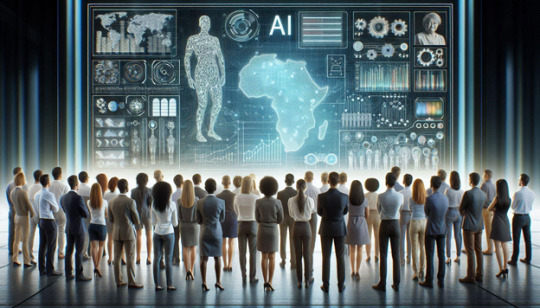
AI ethics certifications are essential for those looking to ensure that AI technologies are developed and implemented ethically. Now, let’s answer some frequently asked questions about AI ethics.
Frequently Asked Questions (FAQ)
1. What are the biggest ethical concerns in AI? Some of the most pressing concerns include bias in AI systems, lack of transparency, and privacy risks.
2. How can we reduce bias in AI? Bias in AI systems can be minimized by using diverse data sets, performing regular fairness audits, and incorporating explainable AI techniques.
3. Why is transparency important in AI? Transparency allows users to understand how AI makes decisions, which helps ensure accountability and trust in AI systems.
4. What is explainable AI (XAI)? Explainable AI refers to techniques that make AI’s decision-making process more transparent and understandable to humans.
5. Are there regulations governing AI ethics? Yes, frameworks like the European Commission’s AI Ethics Guidelines and regulations like GDPR guide responsible AI development and data privacy.
Conclusion
AI ethics is fundamental to balancing innovation with responsibility. By addressing key ethical concerns such as bias, transparency, and privacy, we can ensure that AI continues to develop in ways that benefit society while minimizing potential harm. As AI continues to advance, fostering responsible practices and promoting ethical frameworks will be essential for the future of this transformative technology.
Have questions or want to learn more about our certifications? Contact us today at AI CERTs and take the first step toward advancing your AI expertise!
#certificationguide#techcertifications#careergrowth#explore#reblogs#inspiration#professionaldevelopment#top10certifications#careeradvancement#creativity
0 notes
Text
AI and Job Automation: Transforming the Workforce
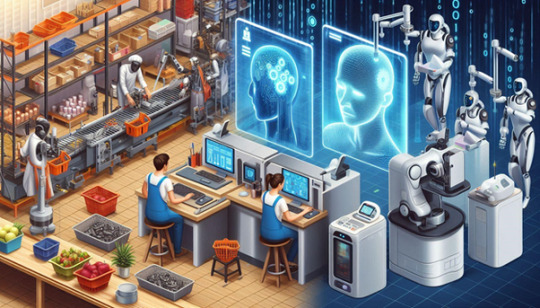
“AI is not just a tool. It will change the way we work, and it will redefine the workplace.”
— Satya Nadella
As we step further into the age of artificial intelligence (AI), conversations about job automation are becoming more relevant and urgent. Many people feel anxious about the idea of AI taking over jobs, while others view it as an exciting opportunity for innovation and efficiency. In this blog, we’ll unpack the complexities of AI and job automation, examining how they impact the workforce, the jobs at risk, the benefits they bring, and what the future of employment might look like.
Understanding Job Automation
So, what exactly is job automation? At its core, job automation involves using technology especially AI and robotics to handle tasks that humans usually do. A recent report from McKinsey reveals a staggering statistic: up to 60% of all occupations could have at least 30% of their activities automated. This is happening across various industries, from manufacturing to customer service.
It’s not all doom and gloom, though! According to the World Economic Forum, while 85 million jobs may disappear due to automation by 2025, there’s also a silver lining: 97 million new roles could emerge in this new landscape. This shift highlights a crucial point: as some jobs fade away, new ones tailored for a tech-savvy workforce will come to life.
Recognizing the potential impact of job automation is essential for individuals and organizations alike. By understanding these changes, we can better prepare for what’s ahead.
Next, let’s dive into which specific jobs are at risk from automation and why.
The Impact of AI on Jobs
1. Jobs at Risk
Some jobs are more vulnerable to automation than others, particularly those that involve repetitive tasks. Here are a few sectors and roles that could face significant risks:
● Manufacturing: Think about assembly line automated robots that can perform these tasks more efficiently than humans. The International Federation of Robotics predicts that the number of industrial robots will hit 4 million units by 2025, potentially displacing jobs like assembly line workers.
● Retail: Self-checkout systems and automated inventory management are changing how we shop. Research from Forrester estimates that 20% of retail jobs could be automated by 2027, largely due to the growth of e-commerce and AI-driven inventory systems.
● Transportation: The rise of self-driving cars threatens truck drivers and delivery personnel. A study from the University of California suggests that up to 3 million truck driving jobs could be automated by 2036 thanks to advancements in autonomous technology.
● Administrative Roles: Many administrative tasks, like data entry and basic customer service inquiries, can be handled by AI-driven software. The Harvard Business Review estimates that 30% of an executive’s job could be automated, particularly tasks like generating reports and scheduling meetings.
By identifying jobs at risk of automation, workers and businesses can proactively adapt to these changes. This awareness is key to navigating the future of work.
While some roles face challenges, others show resilience against automation. Let’s take a look at which jobs are likely to remain in demand.
Jobs That Are Safe
Despite the wave of automation, certain jobs are less likely to be replaced because they require human touch, creativity, and critical thinking:
● Healthcare Professionals: Doctors and nurses need empathy and problem-solving skills that AI simply can’t replicate. According to the American Medical Association, while AI can assist in diagnostics and monitoring, it cannot replace the vital human connection in healthcare.
● Creative Roles: Writers, artists, and designers draw on human experiences and emotions to create content. The World Economic Forum anticipates a 12% growth in creative industry roles by 2025, as businesses seek innovative solutions that only humans can provide.
● Skilled Trades: Electricians, plumbers, and carpenters perform hands-on work that requires adaptability. The National Bureau of Labor Statistics forecasts a 9% growth in demand for skilled trades over the next decade, driven by ongoing maintenance needs.
While some jobs may fade, many will continue to thrive because they rely on uniquely human skills. Understanding these roles can help guide career choices in the changing job landscape.
However, it’s important to consider the ethical implications of AI and job automation. Let’s explore these crucial issues next.
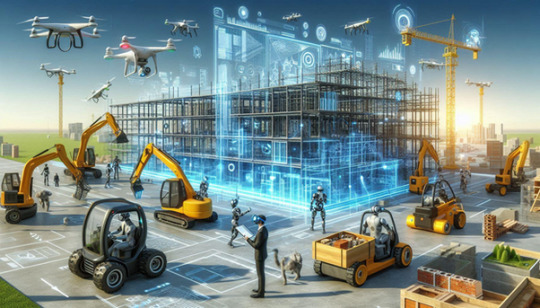
As AI technology becomes more prevalent, we must confront some ethical challenges:
Bias and Fairness: AI algorithms can unintentionally perpetuate biases, leading to unfair hiring practices. Organizations must actively ensure their AI systems are fair and transparent to prevent discrimination.
Job Displacement: The potential for widespread job loss raises moral questions about our responsibility to support those affected. Policies like universal basic income or retraining programs may be necessary to cushion the impact of automation.
Data Privacy: The collection of personal data for AI systems poses risks to user privacy. Maintaining trust means prioritizing data security and ensuring ethical use of information.
Addressing ethical considerations is vital for creating a fair and equitable future. By proactively tackling these issues, we can guide the responsible development of AI technologies.
To put this into context, let’s look at some real-world case studies that highlight both the challenges and opportunities presented by AI.
Real-World Case Studies
Examining real-world applications of AI can help us understand its impact:
● Amazon: The retail giant utilizes robots in its warehouses to streamline operations. While this boosts efficiency, reports suggest it also creates pressure on human workers to meet performance targets.
● Siemens: This engineering company uses AI for predictive maintenance, which allows them to foresee when machines need servicing. This not only improves efficiency but also creates demand for specialists to manage these systems.
● JPMorgan Chase: By employing AI to analyze contracts, this financial institution has sped up processes dramatically. This innovation has led to new roles focused on overseeing AI applications in finance, showcasing how job responsibilities can evolve instead of vanish.
These case studies illustrate the multifaceted effects of AI and automation on the workforce. By recognizing both challenges and opportunities, businesses can better navigate this transformation.
Now, let’s explore the specific impacts of AI automation on various sectors and how they’re being reshaped.
Sector-Specific Impacts of AI Automation
Healthcare: AI is revolutionizing how we approach diagnostics and patient management. For instance, IBM Watson Health uses AI to analyze medical data and offer treatment recommendations. This technology enhances decision-making, allowing healthcare professionals to spend more time with patients.
Finance: In the finance sector, AI is used for everything from fraud detection to customer service. A Deloitte report suggests that financial services could see $1 trillion in productivity gains from AI by 2030, fundamentally changing roles in finance and compliance.
Agriculture: Precision farming, driven by AI, enables farmers to optimize their yields and minimize waste. Drones equipped with AI technology can monitor crop health, creating new job opportunities in agri-tech as the industry embraces innovation.
Education: AI can personalize learning experiences, tailoring educational content to individual needs. This shift may change traditional teaching roles, requiring educators to adapt their skills to focus more on mentorship and less on lecturing.
The sector-specific impacts of AI automation demonstrate how various industries can benefit from technological advancements while also adapting to change. Understanding these dynamics is key to success in the evolving job market.
With these insights in mind, let’s discuss how businesses and individuals can adapt to this changing landscape.
The Future of Work: Adapting to Change
The job landscape is evolving, and individuals and organizations must adapt. Here are some strategies for thriving in an AI-driven world:
● Upskilling and Reskilling: Continuous learning is vital. Workers should seek training in areas like data analysis and AI management. Companies can support their teams by offering workshops and training programs focused on emerging technologies.
● Emphasizing Soft Skills: Skills like communication, teamwork, and emotional intelligence are becoming increasingly valuable, as they’re challenging for AI to replicate. The World Economic Forum predicts that by 2025, soft skills will be essential for 40% of all jobs.
● Lifelong Learning: Embrace the idea of lifelong learning. Engage in ongoing education, whether through formal courses or self-study, to stay relevant in the workforce. Online platforms like Coursera and edX offer many courses to help individuals keep up with industry trends.
● Adapting Organizational Culture: Companies must cultivate a culture that welcomes change and innovation. Creating an environment where employees feel empowered to experiment can drive transformation and resilience.
Preparing for the future of work involves a proactive approach to skill development and a culture of adaptability. By embracing change, both individuals and businesses can thrive in an AI-driven economy.
Certifications to Explore AI and Job Automation
To better understand AI’s role in job automation and enhance your skills in this evolving landscape, consider pursuing these certifications:
Coursera: AI For Everyone by Andrew Ng This course provides a broad overview of AI and its applications in various industries, making it suitable for professionals looking to integrate AI into their workflows. Learn more here.
AI CERTs: AI Robotics Certification This certification focuses on the integration of AI and robotics, providing knowledge and skills to design and implement robotic systems in various applications. Learn more here
edX: Artificial Intelligence MicroMasters Program Offered by Columbia University, this program covers foundational AI concepts and techniques, providing a solid base for those looking to advance their careers in AI. Learn more here.
IBM: AI Engineering Professional Certificate This program provides hands-on experience in AI tools and techniques, preparing learners for roles in AI engineering and data science. Learn more here.
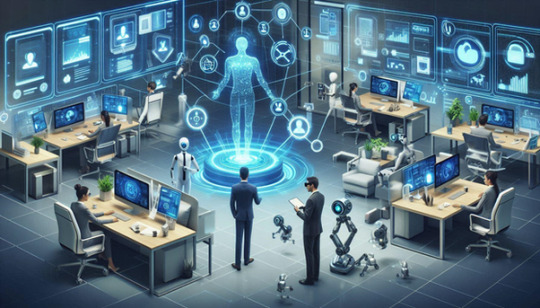
By pursuing these certifications, you can not only enhance your skills but also prepare for the exciting opportunities that lie ahead in the evolving job market.
Conclusion
AI and job automation are reshaping the landscape of work, presenting both challenges and opportunities. While some jobs may be at risk, the potential for increased efficiency, productivity, and the creation of new roles is significant. By embracing change, investing in education, and adapting to the evolving workforce, individuals can not only survive but thrive in this new era. As we move forward, the collaboration between AI and humans will be crucial in shaping a brighter future for work.
Frequently Asked Questions (FAQ)
1. Will AI replace my job?
AI will likely transform many jobs rather than replace them entirely. While some roles may become automated, new opportunities will arise in areas like AI management, data analysis, and other fields that require human skills such as creativity and emotional intelligence.
2. What types of jobs are most at risk from automation?
Jobs that involve repetitive tasks, such as assembly line work, data entry, and basic customer service, are more susceptible to automation. Industries like manufacturing, retail, and transportation are particularly affected by AI advancements.
3. What are the benefits of AI and automation in the workplace?
AI and automation can lead to increased efficiency, reduced operational costs, and improved productivity. They can also enhance data analysis and decision-making, allowing businesses to respond more swiftly to market changes.
4. How can I prepare for the future job market impacted by AI?
To prepare for the evolving job market, focus on upskilling and reskilling in areas like data literacy, and AI management, and soft skills such as communication and critical thinking. Lifelong learning and adaptability will be crucial for success.
5. Are there any jobs that AI cannot replace?
Yes, jobs that require human creativity, empathy, and complex decision-making as healthcare professionals, educators, and skilled tradespeople are less likely to be replaced by AI. These roles depend on human connection and nuanced understanding.
6. What certifications should I consider to advance my career in AI?
Consider certifications like the AI Prompt Engineer Certification and the AI Robotics Certification. These programs can provide you with valuable skills to thrive in the AI-driven job market.
● AI Prompt Engineer Certification
● AI Robotics Certification
Have questions or want to learn more about our certifications? Reach out to us! Our team is here to assist you on your journey in the exciting world of AI.
#top10certifications#certificationguide#techcertifications#careergrowth#reblogs#explore#professionaldevelopment#careeradvancement#inspiration#creativity
0 notes
Text
AI vs Human Intelligence: Differences and Similarities

“Artificial intelligence is the science of making machines do things that would require intelligence if done by men.” — Marvin Minsky, AI pioneer.
With the rapid growth of Artificial Intelligence (AI), it’s natural to compare it to human intelligence. AI has proven its capabilities in areas we once thought were the exclusive domain of humans, like problem-solving, decision-making, and even creativity. However, while AI shines in speed and efficiency, it still lacks the emotional depth, creativity, and adaptability that make human intelligence unique.
In this blog, we’ll explore the key differences and similarities between AI and human intelligence, focusing on learning, decision-making, creativity, and adaptability. Let’s also look at how these two forms of intelligence are already working together and shaping the future.
What is AI and What is Human Intelligence?
Artificial Intelligence (AI) refers to computer systems that can perform tasks that typically require human intelligence. Think about tasks like analyzing data, recognizing patterns, or making decisions. AI’s power comes from its algorithms, machine learning, and deep learning models, which enable it to learn and adapt to vast amounts of data.
Human Intelligence, on the other hand, is much broader. It’s not just about problem-solving; it’s also about creativity, empathy, and the ability to adapt to new or complex situations. Human intelligence grows and evolves through experience, emotions, and continuous learning, which AI, for all its brilliance, doesn’t yet possess.
Key Differences Between AI and Human Intelligence
1. Learning: AI Learns from Data, Humans Learn from Experience
AI: AI learns by processing huge datasets and identifying patterns. The more data it has, the better it performs. For example, AI can analyze thousands of medical images to help doctors detect diseases more accurately and quickly. But it needs that data to improve, and its learning is always data driven.
Humans: Humans, however, learn through a combination of experiences, observations, and social interactions. We can learn new concepts even without extensive data, using intuition and emotional insights. While humans can’t process large volumes of data as quickly as AI, we can make connections and learn from small sets of information, often filling in gaps with our reasoning.
AI is lightning-fast at processing data, but humans excel at learning from dynamic, real-life experiences and adapting to new situations.
In the next section, we’ll explore the adaptability of AI compared to humans.
2. Adaptability: AI is Specialized, Humans Are Flexible
AI: Most AI systems are designed for specific tasks. For example, AI like AlphaGo, which famously defeated top human Go players, is highly specialized. But it wouldn’t be able to apply that expertise to another board game or a real-world problem. AI is great within its set parameters, but outside of that, it struggles.
Humans: Human intelligence is incredibly adaptable. We can switch between different types of thinking, learn new skills, and apply our knowledge across various situations. This flexibility is key to creative problem-solving and innovation, something AI still lacks.
AI is efficient at specific tasks, but humans can adapt and apply their intelligence across multiple areas.
In the next section, we’ll dive into the differences in how AI and humans make decisions.
3. Decision-Making: AI is Data-Driven, Humans Use Intuition
AI: AI makes decisions based on logic and data analysis. For instance, AI in finance can analyze historical data and make real-time trading decisions much faster than any human. But it’s limited by its programming and data it can’t consider ethical or emotional factors unless explicitly programmed to do so.
Humans: Human decision-making blends data with intuition, emotion, and experience. We can make multi-dimensional decisions that take into account complex factors like ethics, empathy, and long-term consequences, which AI, for now, struggles to do.
AI is quick and efficient with data-driven decisions, while humans bring a nuanced blend of logic, intuition, and emotion to their decision-making process.
In the next section, we’ll explore the differences in creativity between AI and humans.
4. Creativity: AI Replicates, Humans Innovate
AI: AI can generate content like text, art, or music, but it’s based on patterns and data it has been trained on. For example, tools like OpenAI’s GPT can create human-like text, and AI art programs can produce impressive images. However, AI creativity is still derivative, it can only replicate or blend existing ideas.
Humans: Human creativity is original and driven by emotions, experiences, and the ability to think abstractly. We can combine unrelated ideas to create something entirely new and innovative. Unlike AI, which relies on patterns, humans can think outside the box.
AI can generate creative outputs, but human creativity is fueled by emotions and the ability to imagine and innovate in ways that AI can’t.
In the next section, we’ll discuss emotional intelligence and how humans and AI differ in this area.
5. Emotional Intelligence: Humans Have Empathy, AI Can Simulate
AI: AI can be programmed to recognize and respond to emotional cues, like detecting frustration in a customer’s voice. However, its understanding of emotion is purely synthetic, it doesn’t truly feel or experience emotions. AI can simulate empathy, but it’s not the same as the real, deep empathy humans can offer.
Humans: Humans are inherently social and emotional beings. We can understand and respond to the emotions of others in a way that fosters real connections. Emotional intelligence is a key strength of human intelligence, helping us navigate complex social interactions and build relationships.
Human emotional intelligence enables us to deeply connect with others, while AI can only mimic emotions without truly understanding them.
In the next section, we’ll explore how AI and human intelligence are already working together.
Similarities Between AI and Human Intelligence

1. Pattern Recognition
Both AI and humans are great at recognizing patterns, although AI does it much faster. For instance, AI models in healthcare can scan medical images and detect patterns that could indicate diseases, assisting doctors in making faster diagnoses. Humans also excel at pattern recognition, particularly in creative and social situations, where we can infer meaning even from limited information.
2. Problem-Solving Abilities
AI and humans are both strong problem-solvers. AI approaches problems through data and algorithms, while humans use experience, intuition, and emotion to solve complex issues. In a complementary environment, AI can handle the technical aspects, while humans focus on ethical, emotional, and social factors.
The Future of AI and Human Intelligence: Working Together
Instead of seeing AI and human intelligence as competitors, the future lies in collaboration. AI can handle massive data analysis, making quick, data-driven decisions, while humans bring creativity, intuition, and emotional intelligence into the equation. Together, they can achieve far more than either could alone.
We’re already seeing this partnership in action:
Healthcare: AI helps doctors diagnose faster, while doctors use their emotional intelligence to create personalized treatment plans.
Finance: AI-driven algorithms predict market trends, while human advisors provide clients with ethical, long-term financial strategies.
Education: AI tailors learning experiences to each student, while teachers focus on fostering emotional and social growth.
Certifications to Explore AI and Human Intelligence
If you’re interested in learning more about AI and how it compares to human intelligence, here are some certifications to help you gain deeper insights and practical skills:
AI CERTs: AI Engineering™ Certification This certification covers the engineering aspects of AI, offering a strong foundation in AI systems development, algorithms, and data processing. Learn more here.
2. AI CERTs: AI+ Prompt Engineer™ Certification
This certification equips professionals with the essential skills to design and optimize AI-generated prompts for various industries, enhancing interaction and functionality in AI-powered systems. Learn more here.
3. Stanford University: AI and Machine Learning Certificate A prestigious certification from Stanford that provides in-depth knowledge of AI and machine learning algorithms across industries. Learn more here.
4. MIT Professional Education: Artificial Intelligence in Business Strategy This certification provides insights into how AI is transforming industries and equips professionals with strategies to integrate AI into business processes. Learn more here.

By pursuing these certifications, you’ll be well-equipped to navigate the evolving landscape where AI and human intelligence intersect, and you’ll gain the skills to thrive in an AI-driven future.
Conclusion
AI and human intelligence have their strengths and weaknesses, but they are not in competition. AI is incredibly powerful when it comes to data processing, pattern recognition, and performing tasks with speed and accuracy. Humans, on the other hand, bring emotional depth, creativity, and adaptability to the table. Together, they form a complementary duo that is transforming industries and enhancing our lives in profound ways.
Frequently Asked Questions (FAQ) About AI vs. Human Intelligence
To help clarify some of the most common queries, here are answers to the top FAQs surrounding AI and human intelligence:
1. What is the main difference between AI and human intelligence? AI relies on algorithms and data to make decisions and perform tasks, while human intelligence involves emotions, creativity, and the ability to adapt to new situations. AI excels in speed and efficiency, while humans are better at abstract thinking and emotional decision-making.
2. Can AI surpass human intelligence? AI can outperform humans in specific tasks, such as data analysis and repetitive processes, but it lacks emotional intelligence, creativity, and adaptability. While AI is rapidly advancing, it’s unlikely to fully replicate the depth and range of human intelligence in the near future.
3. Is AI more efficient than human intelligence? Yes, AI is generally more efficient in tasks that involve processing large amounts of data or performing repetitive actions. However, in situations that require emotional understanding, ethical decision-making, or creativity, humans are far more capable.
4. How do AI and human intelligence work together? AI and human intelligence can complement each other. AI can handle data-driven tasks, while humans provide context, creativity, and emotional insights. This collaboration is already transforming industries like healthcare, finance, and education.
5. What are the limitations of AI compared to human intelligence? AI lacks emotional intelligence, creativity, and the ability to generalize knowledge across different domains. It’s often limited by the data it has been trained on and is not as flexible or intuitive as human intelligence.
This FAQ section addresses some of the most searched and frequently asked questions about the distinctions and collaborations between AI and human intelligence. Feel free to explore further if you’re curious about the evolving relationship between the two!
“Ready to elevate your career with AI expertise? Contact AI CERTs today and discover how our certifications can take you to the next level in the world of artificial intelligence!”
#professionaldevelopment#techcertifications#careergrowth#explore#careeradvancement#inspiration#top10certifications#certificationguide#reblogs#creativity
0 notes
Text
AI and Quantum Computing: A Glimpse into the Future of Technology

AI (Artificial Intelligence) and quantum computing are at the cutting edge of technological advancement, each powerful on its own. But when combined, they promise to unlock unimaginable possibilities in solving the most complex challenges we face today.
In this blog, we’ll explore what these two technologies are, how they intersect, and their potential to transform industries from healthcare to finance and beyond.
Understanding AI and Quantum Computing
What is Artificial Intelligence?
Artificial Intelligence is essentially about machines mimicking human intelligence. Think of the voice assistants on your phone, Netflix’s recommendations, or even self-driving cars — these are all examples of AI in action. AI comes in two major flavors:
Narrow AI: This type is built for specific tasks, like recognizing faces or recommending songs. It’s highly effective but limited to what it’s trained for.
General AI: This is the holy grail of AI — an intelligent system that can perform any task a human can. Though we’re still far from creating true general AI, the field continues to advance rapidly.
AI has already found its way into industries like healthcare, where it’s diagnosing diseases, and in finance, where it’s predicting market trends. Its ability to learn from data and make decisions autonomously is making life easier and businesses more efficient.
Now that we’ve explored AI, it’s time to turn our attention to quantum computing — a technology that could significantly accelerate AI’s capabilities.
What is Quantum Computing?
Now, let’s talk about quantum computing, a technology often described as “mind-bending.” While classical computers rely on bits (which are either 0 or 1), quantum computers use qubits, which can be both 0 and 1 at the same time due to a phenomenon called superposition. Quantum computers also take advantage of entanglement, where qubits become interconnected in ways that allow them to influence each other instantaneously, no matter the distance.
The ability of quantum computers to process multiple possibilities simultaneously makes them extraordinarily fast at solving certain types of problems. In areas like cryptography, material science, and complex optimization, quantum computing promises to leap ahead of classical machines in ways we’re only beginning to understand.
With quantum computing now explained, let’s explore how it intersects with AI to create even more powerful systems.
The Intersection of AI and Quantum Computing
When AI and quantum computing combine, the results are truly transformative. Quantum computing’s sheer computational power can take AI to the next level, improving machine learning algorithms and making data processing faster and more efficient.
Enhanced Machine Learning
AI systems rely on machine learning to “learn” from data, but training these systems can take vast amounts of time and computational resources. Quantum computing can significantly reduce this training time by using quantum algorithms that solve problems faster than classical ones, leading to more efficient AI models.
Improved Data Processing
Data is the fuel for AI. Quantum computing’s ability to analyze massive datasets all at once can accelerate AI’s data-crunching capabilities. This could revolutionize industries like healthcare, where real-time data analysis is crucial for things like personalized treatment plans.
Novel AI Algorithms
Quantum computing could pave the way for entirely new AI algorithms that classical computers simply can’t handle. These new algorithms could vastly improve areas like real-time decision-making, robotics, and financial modeling, where rapid and accurate predictions are key.

Challenges and Considerations
Technical Complexity
As promising as the fusion of AI and quantum computing is, it’s not without challenges. Quantum computing is still in its infancy, and developing stable, scalable quantum systems remains a huge hurdle. Researchers are also grappling with maintaining qubit stability and reducing error rates to ensure reliable results.
Ethical and Security Concerns
AI and quantum computing both raise important ethical questions. Quantum computers’ ability to break today’s encryption methods poses a security risk, and AI’s reliance on massive amounts of data brings up privacy concerns. The combined power of these technologies will force society to rethink how we handle data and security.
Skills Gap
One of the biggest challenges to the mass adoption of AI and quantum computing is the lack of skilled professionals. The field is so new that there simply aren’t enough experts who understand both AI and quantum computing, creating a significant skills gap. Training programs and certifications will be key to overcoming this barrier.
Despite these challenges, we are already seeing the real-world impact of AI and quantum computing.
Real-World Applications
Even though we’re in the early stages, AI and quantum computing are already making waves across industries.
IBM Quantum
IBM is leading the charge in quantum computing, using quantum algorithms to push the boundaries of AI research. Through their cloud-based platform, IBM Quantum Experience, researchers can run quantum algorithms to solve problems that would take classical computers much longer to handle.
Google Quantum AI
Google has made headlines with its quantum computing breakthroughs, notably achieving “quantum supremacy.” Google Quantum AI is focused on how quantum algorithms can advance AI applications, particularly in material science and optimization problems. Their efforts are laying the groundwork for future quantum-enhanced AI systems.
D-Wave Systems
D-Wave is taking a more practical approach with its quantum annealing systems, which excel at solving optimization problems. These systems are already being used to improve AI algorithms in logistics, helping companies make better decisions about supply chain management and resource allocation.
For those looking to enter this exciting field, several certifications can provide the necessary knowledge and skills.
Certifications for AI and Quantum Computing
To keep up with this emerging field, it’s crucial to stay on top of the latest developments. Thankfully, some certifications can help you build the skills needed to thrive at the intersection of AI and quantum computing. Here are some of the best certifications to consider:
1. AI+Quantum™ Certification by AICERTs
Overview: This certification dives deep into the combined world of AI and quantum computing. It covers topics like quantum-enhanced machine learning, AI-powered quantum algorithms, and how quantum computing can solve advanced AI problems.
Key Benefits: Gain expertise in a rapidly growing field, understand real-world applications of AI and quantum technologies and enhance your career opportunities.
Ideal Candidates: AI professionals, data scientists, quantum enthusiasts, and anyone looking to combine AI with cutting-edge quantum computing technologies.

2. Quantum Machine Learning Certification by IBM
Overview: This certification, offered by one of the pioneers in quantum computing, focuses on how quantum algorithms can be used to improve machine learning. You’ll get hands-on experience using IBM’s quantum computers via the IBM Quantum Experience platform.
Key Benefits: Learn from IBM’s quantum experts, access real quantum computers, and gain a competitive edge in the growing field of quantum AI.
Ideal Candidates: AI developers, machine learning engineers, quantum computing researchers, and professionals interested in practical quantum applications.
Link: IBM
3. Google Quantum AI Professional Certification
Overview: Google’s Quantum AI certification is designed to give you a strong foundation in quantum computing with a focus on AI applications. The program covers everything from the basics of quantum mechanics to advanced quantum algorithms for AI.
Key Benefits: Leverage Google’s cutting-edge research, work on real-world problems, and explore the latest innovations in quantum computing and AI.
Ideal Candidates: Tech professionals, AI engineers, and quantum computing learners who want to deepen their understanding of quantum AI.
Link: Quantum AI
4. MIT Quantum Computing Fundamentals
Overview: MIT offers one of the most respected quantum computing certifications, focusing on the theoretical foundations and practical applications of quantum technology, including its role in AI.
Key Benefits: Learn from world-class instructors, build a strong theoretical background, and work on hands-on projects using quantum computing platforms.
Ideal Candidates: AI practitioners, computer scientists, and engineers looking to expand their knowledge in quantum computing and its intersection with AI.
Link: MIT
5. AI-Driven Quantum Systems Certification by Microsoft
Overview: Microsoft’s certification is tailored to professionals interested in applying AI within quantum systems. The course focuses on using AI techniques to solve complex problems using quantum computing.
Key Benefits: Get hands-on experience with Microsoft’s quantum development tools, learn how to integrate AI into quantum systems, and become part of the next wave of tech professionals.
Ideal Candidates: Engineers, data scientists, AI experts, and those looking to specialize in quantum technologies.
Link: Microsoft Azure
To further clarify common questions about AI and quantum computing, we’ve compiled a brief FAQ.
FAQ Section
1. How are AI and quantum computing different?
AI is focused on replicating human-like intelligence in machines, while quantum computing uses quantum mechanics to solve complex problems faster than traditional computers.
2. Can AI run on quantum computers?
Yes, quantum computing has the potential to significantly enhance AI by speeding up data processing and improving the performance of AI algorithms.
3. Is quantum computing ready for widespread use?
Not yet, but the technology is advancing rapidly. Platforms like IBM Quantum Experience and Google Quantum AI are making quantum computing more accessible, though widespread adoption is still a few years away.
4. What industries stand to benefit most from the convergence of AI and quantum computing?
Healthcare, finance, logistics, cybersecurity, and material science are likely to see the most significant advancements from the combined power of AI and quantum computing.
5. How can I start learning about AI and quantum computing?
There are many resources available, including online courses, certification programs, and research papers. Start by building a foundation in AI and quantum mechanics before diving into specialized areas.
Conclusion
The convergence of AI and quantum computing heralds a new era of technological advancement. As researchers and organizations continue to explore their intersection, we can expect breakthroughs that will revolutionize industries and reshape our understanding of what is possible.
While challenges remain, the potential benefits of harnessing the power of both technologies are immense. Embracing this future will require collaboration, innovation, and a commitment to ethical considerations to ensure that these advancements serve humanity’s best interests.
#techcertifications#careergrowth#explore#creativity#careeradvancement#inspiration#professionaldevelopment#top10certifications#certificationguide#reblogs
0 notes
Text
AI in Education: Personalized Learning and the Future of Online Learning

The landscape of education is changing at a breathtaking pace, largely due to the transformative power of artificial intelligence (AI). Imagine a world where every student experiences a learning journey tailored just for them this is no longer just a dream; it’s rapidly becoming our reality.
In this blog, we’ll explore how AI is reshaping education, the benefits of personalized learning, what the future holds for online education, and the essential certifications educators need to thrive in this evolving environment.
What is AI in Education?
At its essence, AI in education refers to using smart algorithms and machine learning to enhance the learning experience for students. By sifting through data on how students interact with their studies, AI can provide valuable insights that help teachers make better decisions. This technology can come in various forms, from intelligent tutoring systems that offer real-time support to predictive analytics that help forecast student performance.
In simple terms, AI is changing how we teach and learn, making education more inclusive and effective, and helping students excel in ways traditional methods often can’t.
Let’s dive deeper into the advantages of personalized learning and what it means for students.
The Advantages of Personalized Learning
Boosting Engagement and Motivation
Personalized learning, powered by AI, makes education more captivating. When lessons align with students’ interests and learning styles, they are far more likely to stay engaged. Just think about how much more exciting your studies would be if the content felt relevant to your life! AI-driven platforms can offer interactive resources tailored to individual learners, transforming education from a chore into an adventure.
By connecting with students on a personal level, personalized learning ignites a love for knowledge that extends beyond the classroom.
Next, let’s explore how this approach can lead to improved learning outcomes.
Improving Learning Outcomes
Personalized learning leads to better results. AI can pinpoint each student’s strengths and weaknesses, enabling educators to craft customized learning plans. Picture a scenario where a student struggling with math gets focused resources and support, while their classmates move forward with their studies. This individualized approach not only boosts confidence but also ensures that every student can achieve their academic goals.
Ultimately, personalized learning paves the way for all students to reach their full potential, making education more equitable.
Now, let’s discuss how AI contributes to flexible learning paths.
Embracing Flexible Learning Paths
One of the most exciting aspects of AI in education is the flexibility it offers. Online platforms powered by AI allow students to access resources anytime and anywhere, giving them control over their education. Whether a student prefers to study late at night or during the day, AI facilitates their unique learning journey.
This adaptability creates a more inclusive educational environment that caters to diverse lifestyles and commitments.
AI isn’t just beneficial for students; it also provides crucial support for educators.
Supporting Educators
Educators often juggle a myriad of tasks, leaving them little time to focus on teaching. AI can help ease this burden by automating routine responsibilities, such as grading and data analysis. With AI handling these tasks, teachers can dedicate more time to connecting with students and creating meaningful learning experiences. When educators are supported by AI, they can better address the diverse needs of their students.
By enhancing the role of educators, AI fosters a collaborative and effective learning atmosphere.

The Future of Online Learning
As we gaze into the future, the prospects for online learning with AI integration appear bright. Here are some key trends we can anticipate:
Adaptive Learning Technologies
Adaptive learning technologies are changing the game. These systems continuously assess student performance and adjust content and difficulty levels in real-time. Imagine a learning platform that recognizes when you’re having a tough time and offers additional resources to help you grasp the concept. This personalized approach ensures that every student can master the material at their own pace.
With adaptive learning, education becomes a customized adventure that respects individual learning curves.
Now, let’s examine the rise of intelligent tutoring systems.
Intelligent Tutoring Systems
Intelligent tutoring systems (ITS) simulate one-on-one tutoring experiences by providing personalized feedback and support. Picture a student who can ask questions and receive instant help at any time this is the magic of ITS. As this technology develops, we can expect even more sophisticated support tailored to each learner’s unique journey.
The rise of ITS highlights the need for personalized assistance in fostering student success.
Data-driven insights are becoming increasingly critical in education.
Data-Driven Insights
AI’s ability to analyze vast amounts of data is a game-changer for educational institutions. With powerful analytics tools, schools can track student progress, identify trends, and implement strategies based on solid evidence. This data-driven approach allows educators to make informed decisions, ultimately improving educational outcomes.
By harnessing the power of data, institutions can create targeted strategies that enhance the learning experience for everyone.
Lastly, let’s discuss how AI promotes greater accessibility in education.
Enhancing Accessibility
AI is breaking down barriers and paving the way for a more inclusive educational landscape. By providing personalized learning experiences, language translation, and support for students with disabilities, AI ensures that all learners have the opportunity to succeed. As online learning continues to evolve, prioritizing accessibility will be vital in bridging educational gaps.
This focus on inclusivity enriches the educational experience for all students.
Now, let’s look at essential certifications that can help educators navigate this new landscape.
Essential Certifications for Educators
As AI transforms the education sector, educators must equip themselves with the skills necessary to thrive in this evolving environment. Here are some key certifications that can enhance their expertise:
1. AI+ Educator Certification by AI CERTs
Overview: This certification is designed for educators who want to enhance their skills in integrating AI technologies into their teaching methods and curricula.
Key Benefits:
Develops a comprehensive understanding of AI applications in education.
Equips educators with tools to create personalized learning experiences.
Fosters skills to effectively use AI in classroom management and assessment.
Ideal Candidates: Teachers, instructional designers, and educational administrators seeking to innovate their teaching practices through AI.
Link: AI+ Educator Certification.

2. AI in Education MicroMasters Program by edX (MIT)
Overview: This MicroMasters program offers a deep dive into AI concepts, including machine learning and its applications in education.
Key Benefits: Comprehensive understanding of AI’s role in education, access to cutting-edge research, and hands-on projects.
Ideal Candidates: Educators, instructional designers, and educational technologists.
Link: AI in Education MicroMasters Program
3. Artificial Intelligence in Education Certification by Stanford Online
Overview: This course focuses on how AI can enhance educational practices, exploring topics like adaptive learning and intelligent tutoring systems.
Key Benefits: Understanding the practical applications of AI in education, and fostering innovative teaching strategies.
Ideal Candidates: Teachers, administrators, and education technology specialists.
Link: Artificial Intelligence in Education Certification
4. AI for Education Certificate by Coursera
Overview: This certification program teaches educators how to leverage AI tools to enhance learning experiences.
Key Benefits: Provides insights into AI technologies and their applications in classroom settings.
Ideal Candidates: K-12 educators and higher education instructors.
Link: AI for Education Certificate
5. AI Learning & Development Certification by AI CERTs
Overview: This certification focuses on equipping professionals with the knowledge and skills needed to integrate AI into learning and development programs effectively.
Key Benefits:
Enhances understanding of AI technologies and their application in training and development.
Provides strategies for creating personalized learning experiences.
Prepares educators and trainers to leverage AI for skill development and workforce readiness.
Ideal Candidates: Learning and development professionals, instructional designers, and educators looking to enhance their training programs with AI.
Link: AI Learning & Development Certification
Pursuing these certifications allows educators to stay ahead of the curve in a rapidly changing educational landscape, ensuring they provide the best possible learning experiences for their students.
As we consider certifications, it’s also important to address the ethical implications surrounding AI in education.
Ethical Considerations in AI Education
As we embrace AI in education, we must address the ethical considerations that arise. Data privacy and security are paramount, as educational institutions need to protect students’ personal information. Additionally, there’s the risk of bias in AI algorithms, which can impact the fairness of personalized learning experiences.
Educators and institutions must collaborate to create policies that prioritize ethical considerations while leveraging the power of AI.
Finally, let’s reflect on the overall impact of AI on education and what the future may hold.
Conclusion
The integration of AI into education is not just about technology; it’s about enhancing the learning experience for students and educators alike. With personalized learning taking center stage, we are moving toward a future where education is tailored to individual needs and preferences.
As we navigate these changes, we must remain vigilant about the challenges and strive to create an inclusive environment for all learners. The journey is just beginning, and the possibilities are limitless.
“Have questions or need assistance? Reach out to us, and let’s elevate your learning journey together!”
#professionaldevelopment#techcertifications#careergrowth#certificationguide#explore#reblogs#top10certifications#careeradvancement#inspiration#creativity
0 notes
Text
AI in Financial Services: Revolutionizing the Future of Finance

In finance, artificial intelligence (AI) is transforming the industry by automating processes, improving decision-making, and uncovering valuable insights from vast amounts of data. AI technologies are being leveraged in areas such as banking, investment, and risk management to enhance efficiency, reduce costs, and deliver more personalized financial services. Andrew Ng, Co-founder of Google Brain and Coursera
Artificial Intelligence (AI) is reshaping the financial services landscape, enhancing efficiency, accuracy, and customer experience. AI technologies are transforming banking and investment management by streamlining operations, enhancing risk management, and delivering personalized services.
In this blog, we will explore the transformative role of AI in financial services, its applications, benefits, challenges, and relevant certifications for professionals looking to excel in this dynamic field.
Understanding AI in Financial Services
AI refers to the simulation of human intelligence in machines programmed to think and learn. In financial services, AI encompasses various technologies, including machine learning, natural language processing, and robotic process automation. These technologies enable financial institutions to analyze vast amounts of data, automate processes, and enhance decision-making.
AI is paving the way for innovative solutions in finance, reshaping how institutions operate and interact with clients. Understanding the core principles of AI is essential for leveraging its capabilities effectively.
As we delve into the practical applications, we’ll see how AI is already making waves in the financial sector.
Applications of AI in Financial Services
Fraud Detection and Prevention: AI algorithms can analyze transaction patterns to identify anomalies and potential fraud in real time. By leveraging machine learning, financial institutions can improve their detection rates and minimize losses.
Credit Scoring and Risk Assessment: AI can enhance traditional credit scoring models by incorporating alternative data sources, such as social media activity and transaction histories. This allows for more accurate risk assessments and better decision-making for loan approvals.
Customer Service Automation: AI-powered chatbots and virtual assistants are transforming customer service in financial institutions. They provide instant responses to customer inquiries, assist with transactions, and offer personalized financial advice.
Algorithmic Trading: AI algorithms can analyze market trends and execute trades at high speeds, optimizing investment strategies. This technology reduces human error and increases profitability in trading.
Regulatory Compliance: AI can help financial institutions navigate complex regulatory environments by automating compliance processes and monitoring transactions for suspicious activities.
These applications demonstrate the versatility of AI in enhancing various aspects of financial services. By automating processes and improving accuracy, AI technologies can significantly transform traditional financial operations.
Next, we will explore the multitude of benefits that AI brings to the financial sector.
Benefits of AI in Financial Services
Enhanced Efficiency: AI automates repetitive tasks, freeing employees to focus on more strategic activities. This leads to increased productivity and reduces operational costs.
Improved Customer Experience: With personalized services and instant support, AI enhances customer satisfaction and loyalty, creating a more engaging banking experience.
Data-Driven Insights: AI technologies can analyze vast datasets to uncover trends and insights, enabling better decision-making and strategic planning.
Risk Mitigation: AI helps financial institutions identify and manage risks more effectively, reducing the likelihood of fraud and financial losses.
The benefits of AI in financial services are profound, enabling institutions to operate more efficiently while providing exceptional service to clients. Embracing these technologies is crucial for staying competitive in an evolving market.
Let’s now examine the challenges that come with implementing AI in this highly regulated industry.
Challenges of Implementing AI in Financial Services
Data Privacy and Security: The use of AI requires access to sensitive customer data, raising concerns about privacy and security. Financial institutions must implement robust data protection measures.
Regulatory Hurdles: The financial sector is heavily regulated and integrating AI technologies can lead to compliance challenges. Institutions must navigate regulatory frameworks while adopting AI solutions.
Bias in AI Algorithms: AI systems can inadvertently perpetuate bias if not carefully designed and monitored. Ensuring fairness and transparency in AI decision-making is crucial.
Addressing these challenges is essential for the successful implementation of AI in financial services. Organizations must prioritize ethical considerations and compliance to build trust with customers and regulators alike.
As we move forward, let’s explore certifications that can help professionals navigate this evolving landscape.
Certifications for Professionals in AI and Financial Services
As AI continues to evolve, professionals in financial services can enhance their expertise through relevant certifications. Here are some notable certifications:
Certified Financial Analyst (CFA): A globally recognized credential with a solid foundation in investment management and financial analysis, essential for understanding AI’s impact on trading and investment.
Link: CFA
AI+ Finance Certification from AI CERTs: This certification focuses on the application of AI in finance, covering areas such as risk assessment, fraud detection, and investment strategies. It equips professionals with the knowledge to leverage AI effectively in financial contexts.
Link: AI CERTs

AI and Machine Learning for Financial Services by Coursera: An online course designed to equip financial professionals with the skills needed to apply AI and machine learning in their work.
Link:Coursera
Certified Information Systems Auditor (CISA): Focuses on information systems audit, control, and security, which is crucial for ensuring that AI systems operate within regulatory frameworks.
Link:CISA
Artificial Intelligence for Finance by Data Camp: A certification that teaches the application of AI in finance, covering topics such as credit scoring and algorithmic trading.
Link:DataCamp
Pursuing these certifications can significantly enhance a professional’s skill set, ensuring they are well-equipped to navigate the complexities of AI in the financial sector.
Next, we’ll highlight some impactful case studies of AI implementation in financial services to illustrate its practical applications.
Case Studies of AI Implementation in Financial Services
JP Morgan Chase: Contract Intelligence (COiN)
JP Morgan Chase developed the COiN (Contract Intelligence) platform, which utilizes AI to review legal documents and extract important data. The initiative reduced the time spent on reviewing 12,000 annual commercial credit agreements from 360,000 human work hours to just seconds. By leveraging AI, JP Morgan saved millions of dollars in operational costs and significantly reduced the risk of human error.
Goldman Sachs: Automated Trading Systems
Goldman Sachs employs AI algorithms to manage its trading strategies. These systems analyze vast amounts of market data and execute trades at optimal times. With AI handling more than 45% of all Goldman Sachs’ equity trading, the company has reduced its trading floor workforce from 600 traders in 2000 to just 2 traders in recent years. AI has helped the firm achieve faster, more efficient trades, and minimized human error in high-stakes environments.
Bank of America: Erica
Bank of America launched Erica, an AI-powered virtual assistant, to help customers manage their accounts, make transactions, and provide personalized financial advice. As of 2023, Erica has assisted over 33 million customers with more than 1 billion interactions since its launch. This AI-driven tool has improved customer engagement, increasing customer satisfaction rates by 20%, and helping Bank of America reduce operational costs associated with customer service.
These case studies highlight the real-world impact of AI technologies in the financial sector. By adopting innovative solutions, institutions can achieve significant improvements in efficiency, accuracy, and customer satisfaction.
Let’s now discuss the future trends of AI in financial services and what we can expect in the coming years.
Future Trends of AI in Financial Services
As AI technology continues to evolve, several trends are emerging in the financial services sector:
Predictive Analytics: Financial institutions are increasingly utilizing AI to predict market trends and customer behavior. This data-driven approach allows for more proactive decision-making and targeted marketing strategies.
AI-Driven Investment Strategies: Robo-advisors and AI-driven investment platforms are becoming more common, offering personalized investment advice and portfolio management at lower costs.
Integration of Blockchain and AI: Combining AI with blockchain technology can enhance security, transparency, and efficiency in financial transactions. This integration is expected to lead to new financial products and services.

The future of AI in financial services holds immense potential, promising to further transform how institutions operate and interact with clients.
As we wrap up, let’s reflect on the overall significance of AI in this sector.
Conclusion
The integration of AI in financial services is transforming the industry, offering innovative solutions that enhance efficiency, accuracy, and customer experience. While there are challenges to overcome, the potential benefits are immense. As professionals in the field, staying updated with AI advancements and pursuing relevant certifications can pave the way for a successful career in this rapidly evolving landscape.
Final Thoughts
As AI continues to redefine the financial services industry, it is crucial for organizations to embrace this technology while addressing ethical concerns and regulatory challenges. The future of finance is undoubtedly intertwined with AI, promising a more efficient and customer-centric approach.
Have questions or need assistance? Reach out to us at AI CERTs! We’re here to help you navigate your journey in AI education and certification.
0 notes
Text
AI-Powered Creativity: How AI is Shaping Art, Music, and Design

"AI doesn't replace human creativity; it enhances it by offering new possibilities we could never have imagined." – Refik Anadol,
Artificial Intelligence (AI) has transcended its role as a futuristic concept to become a transformative force across various creative domains. It is reshaping how artists, musicians, and designers conceptualize, create, and interact with their work.
This exploration delves into the profound impact of AI on art, music, and design, examining its applications, benefits, and challenges while highlighting the importance of relevant certifications in this evolving landscape.
What is AI-powered creativity?
AI-powered creativity refers to the use of artificial intelligence technologies to enhance or generate creative work across various fields, including art, music, design, and more. This innovative intersection combines human creativity with machine intelligence, enabling new forms of expression and expanding the creative possibilities available to artists and creators.
Key Components
Generative Algorithms: At the core of AI-powered creativity are generative algorithms that can produce new content based on learned patterns from existing data. This includes neural networks capable of generating images, music, or designs by analyzing vast datasets.
Collaborative Tools: AI serves as a collaborative partner in the creative process. Artists can use AI tools to explore ideas, receive suggestions, and iterate on their work more efficiently than ever before.
Data-Driven Insights: By analyzing trends and user preferences, AI can provide creators with insights that guide their work, allowing for more targeted and impactful creations.
Enhanced Accessibility: AI-powered tools democratize creativity by enabling individuals with limited artistic skills to produce compelling work, making art and design more accessible to a wider audience.
The integration of AI into the creative process fosters an environment where artists can experiment, innovate, and push boundaries, leading to a new era of creativity. Next, we will explore how AI is revolutionizing the music industry and what implications this has for musicians and composers.
The Convergence of AI and Creative Expression
AI utilizes machine learning algorithms and neural networks to analyze vast amounts of data, discern patterns, and make informed decisions. This technology is now making significant inroads into creative fields, providing artists and creators with innovative tools to enhance their work and push the boundaries of creativity.
AI's Impact on Art
Overview
In the realm of art, AI has taken on multiple roles, from generating original pieces to assisting artists in their creative processes. Platforms such as DeepArt and DALL-E harness advanced algorithms to produce stunning visuals based on user input or by emulating established artistic styles.
Key Applications
Generative Art: AI algorithms can create unique artworks by learning from extensive datasets of existing art. An exemplary case is the piece “Portrait of Edmond de Belamy,” crafted by the Parisian collective Obvious, which fetched an impressive $432,500 at auction, illustrating the commercial potential of AI-generated art.
Style Transfer: This innovative technique enables AI to overlay the style of one artwork onto another image, allowing artists to experiment with diverse visual aesthetics. Applications like Prisma transform ordinary photographs into artwork that reflects the styles of iconic artists, such as Van Gogh and Picasso.
Collaborative Tools: Platforms like Runway ML empower artists to collaborate with AI, enriching their creative journey instead of replacing their ingenuity. By inputting concepts into these systems, artists can receive suggestions and variations, opening new creative avenues.
Benefits
Democratization of Art: AI facilitates access to art creation, enabling individuals with limited artistic skills to produce visually compelling works.
Inspiration Generation: AI can inspire artists by suggesting new ideas or styles that they might not have considered otherwise.
Efficiency in Workflow: Artists can optimize their processes by automating repetitive tasks, allowing them to concentrate on the creative aspects of their work.
Challenges
Despite its vast potential, the integration of AI into art raises complex questions about authorship, originality, and the essence of creativity itself. The ongoing debate regarding whether AI-generated art can truly be classified as "art" presents a challenge to traditional notions of creativity.
In essence, AI's infusion into the art world offers exciting possibilities for creative expression while presenting challenges that demand careful consideration. Next, we will explore how AI is revolutionizing the music industry and what implications this has for musicians and composers.
AI's Role in Music Creation

Overview
AI's influence on music spans composition, production, and performance. By analyzing patterns in existing music, AI systems can generate melodies, harmonies, and even complete songs, serving as a powerful ally for musicians in their creative endeavors.
Key Applications
Music Composition: AI models like OpenAI’s MuseNet are capable of composing music across various genres, from classical symphonies to contemporary pop hits. This technology enables musicians to explore new soundscapes and push creative boundaries.
Production Automation: AI tools such as LANDR streamline the mastering process, allowing musicians to enhance their tracks efficiently and affordably. These systems analyze audio quality and make adjustments to improve the overall sound.
Personalized Music Experiences: AI-driven applications like AIVA (Artificial Intelligence Virtual Artist) enable users to create customized soundtracks based on their preferences and emotions, elevating user engagement in the music experience.
Benefits
Fostering Innovation: AI encourages novel approaches to music creation, leading to the emergence of new sounds and genres.
Tailored Experiences: AI facilitates personalized music experiences, adapting to individual tastes and preferences.
Cost Reduction: Musicians can leverage AI tools to minimize production costs while maintaining high-quality output.
Challenges
The increasing prevalence of AI in music raises concerns regarding copyright issues and the potential devaluation of human musicianship. As AI-generated compositions gain popularity, discussions surrounding intellectual property rights, and the significance of human creativity will continue to evolve.
Ultimately, AI is reshaping the music landscape by providing innovative tools for creation and production while challenging traditional notions of artistic integrity. Now, let’s examine how AI is impacting the design industry and the implications for designers and their creative processes.
AI's Influence on Design
Overview
AI is revolutionizing the design industry by optimizing workflows, enhancing creativity, and enabling data-driven decision-making. From graphic design to fashion, AI applications are empowering designers to create more efficiently and effectively.
Key Applications
Graphic Design: AI-driven tools such as Canva and Adobe Sensei offer designers templates, layout recommendations, and design enhancements, allowing them to concentrate on the creative aspects of their projects while automating mundane tasks.
Fashion Design: AI platforms like Stitch Fix analyze consumer trends and preferences, assisting designers in creating collections that resonate with current market demands and aesthetics.
User Experience (UX) Design: AI technology can assess user behavior to optimize design elements and improve user interfaces, ultimately enhancing overall user satisfaction.
Benefits
Increased Efficiency: AI streamlines design processes, allowing designers to allocate more time to creative exploration.
Insightful Data Utilization: AI provides valuable insights into consumer preferences and trends, aiding designers in producing more targeted and relevant designs.
Enhanced Creative Potential: AI tools can stimulate designers' creativity by offering suggestions and innovative ideas based on existing designs.
Challenges
While AI enhances design capabilities, it also raises concerns about creativity and originality. As designers increasingly rely on AI solutions, questions surrounding the authenticity of their work and the potential for design homogenization may arise.
In conclusion, AI is significantly enhancing design practices, and empowering designers to innovate while grappling with the complexities of originality and creativity. As we wrap up this exploration, we will consider the future implications of AI's influence on creativity in art, music, and design.
The Future of AI in Creative Fields
The future of AI in creativity is filled with potential, yet it also demands careful consideration of ethical implications. As AI technology evolves, its integration into the realms of art, music, and design is expected to deepen, challenging established definitions of creativity and authorship.
Certifications in AI-Powered Creativity
To thrive in an increasingly AI-driven creative landscape, obtaining relevant certifications can bolster your skills and understanding of how to harness this technology effectively. Here are three notable certifications to consider:
AI+ Design Certification (AI CERTs)
Overview: Offered by AI CERTs, this certification focuses on the integration of AI into design processes, enabling participants to master the tools and technologies driving AI-driven creativity in design.
Key Benefits: Participants gain hands-on experience with AI tools used in the design industry, learn about AI-driven design trends, and enhance their ability to collaborate with AI in producing innovative, cutting-edge designs.
Ideal Candidates: Designers, creative professionals, and individuals looking to combine AI with their design expertise to push the boundaries of modern creativity.
Learn More
AI+ UX Designer Certification (AI CERTs)
Overview: Offered by AI CERTs, this certification focuses on the use of AI in enhancing user experience (UX) design, helping participants master AI tools and techniques that transform how users interact with digital products and services.
Key Benefits: Participants gain practical knowledge of AI-powered UX design tools, learn how to apply AI-driven insights for creating intuitive user interfaces, and stay updated on emerging trends in AI-enhanced UX design.
Ideal Candidates: UX designers, creative professionals, and individuals looking to leverage AI technologies to create seamless, user-centered designs.
Learn More: AI+ UX Designer Certification
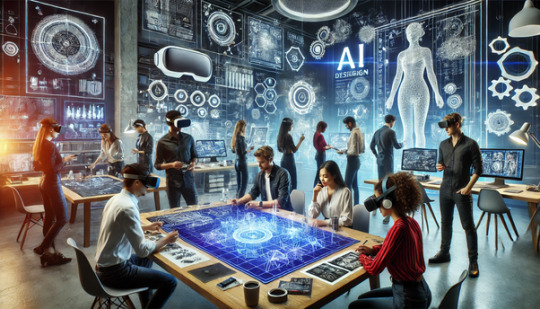
AI for Creatives: The Complete Course (Udemy)
Overview: This course is tailored for artists and designers eager to integrate AI into their creative processes. It covers fundamental AI concepts, practical applications, and hands-on projects.
Key Benefits: Participants learn to utilize AI tools to enrich their artistic endeavors, understand the implications of AI in creativity, and create their AI-generated artwork.
Ideal Candidates: Artists, designers, and individuals interested in exploring the intersection of AI and creativity.
Learn More
Creative AI: The Future of Art and Design (Coursera)
Overview: Offered by the University of London, this course delves into the transformative impact of AI on creative practices in art and design, combining theoretical insights with practical applications.
Key Benefits: Participants gain a comprehensive understanding of the ethical considerations surrounding AI, explore tools and technologies, and analyze real-world case studies.
Ideal Candidates: Professionals in the art and design sectors, students, and enthusiasts seeking to grasp the evolving relationship between AI and creativity.
Learn More
By pursuing these certifications, aspiring creators can stay ahead of the curve in the rapidly evolving landscape of AI-powered creativity, ensuring they are equipped with the skills necessary to thrive in this dynamic environment.
Conclusion
AI is reshaping the creative landscape across art, music, and design, offering innovative tools and processes that enhance human creativity. As we embrace this technological evolution, it is crucial to consider the ethical implications and challenges that arise alongside the opportunities. By obtaining relevant certifications, creators can harness the power of AI while contributing to a more inclusive and dynamic creative future.
#techcertifications#careergrowth#explore#careeradvancement#inspiration#professionaldevelopment#certificationguide#top10certifications#reblogs#creativity
0 notes
Text
AI-Powered Personal Assistants: Revolutionizing Everyday Tasks

Transforming Daily Life with Smart Technology
Imagine waking up in the morning and having your assistant ready to help you manage your day. From scheduling meetings to playing your favorite morning playlist, AI-powered personal assistants like Siri, Alexa, and Google Assistant are changing the way we live and work.
These smart companions not only streamline our daily tasks but also make life feel a little more manageable in our hectic world. As these technologies advance, they are becoming essential across a wide range of industries, driving productivity and efficiency to new levels.
In this blog, we’ll explore what makes AI-powered personal assistants unique, examine their real-world applications, and highlight certifications that can help you excel in this dynamic field. We’ll also look into the future of AI assistants and their increasing impact on our lives, along with how they’re being adopted across various sectors and the ethical considerations surrounding their widespread use.
AI-powered personal assistants are redefining convenience in our daily routines.
Let’s explore what makes these assistants so unique.
What Makes AI-Powered Personal Assistants So Special?
At the heart of these virtual helpers lies a combination of advanced technologies, including Natural Language Processing (NLP), machine learning, and speech recognition. Imagine being able to talk to your devices as if you were having a conversation with a friend. AI personal assistants do just that they understand and respond to human language, learn from our interactions, and automate mundane tasks to make our lives easier.
Here are some of the standout capabilities of AI personal assistants:
Voice Recognition: They can identify and respond to your commands, allowing for hands-free operation.
NLP: This technology helps them understand the nuances of human language, making their responses more relevant and contextual.
Machine Learning: The more you use them, the smarter they get! They learn your preferences and habits, offering personalized suggestions over time.
Automation: These assistants can handle repetitive tasks, from setting reminders to controlling smart home devices, freeing you up to focus on what matters.
The combination of technologies behind AI personal assistants is what makes them so effective.
Now, let’s look at their real-world applications across different sectors.
Real-World Applications
AI-powered personal assistants are not just limited to your phone or smart speaker; they’re making waves in various sectors, enhancing productivity and improving user experiences:
Business Productivity: Tools like Microsoft’s Cortana or Zoom AI can help manage your calendar, organize meetings, and even draft emails making work life more efficient.
Customer Service: Chatbots powered by AI provide instant support to customers, answering queries and resolving issues around the clock, which enhances overall customer satisfaction.
Healthcare: Virtual assistants are changing the game in healthcare by managing patient appointments, providing medical information, and offering reminders for medications helping both patients and healthcare providers stay organized and informed.
Education: AI assistants can facilitate personalized learning experiences, help students with homework, provide resources, and even schedule study sessions.
AI personal assistants are transforming various sectors, significantly improving productivity.
Let’s examine how AI enhances user experiences.
The Role of AI in Enhancing User Experience
AI-powered personal assistants are designed to enhance user experience by providing seamless interactions and intuitive solutions. Here are some ways they achieve this:
Contextual Awareness: These assistants can recognize context, which allows for more natural conversations. For instance, they can understand follow-up questions and adjust responses accordingly.
Predictive Analytics: By analyzing user behavior, AI can predict what you might need next. For example, if you frequently order coffee at a certain time, your assistant might prompt you with your usual order as that time approaches.
Accessibility Features: AI assistants can significantly improve accessibility for individuals with disabilities. Voice commands and personalized responses help users interact with technology more comfortably and effectively.
Enhanced user experience is a key benefit of AI personal assistants.
Now, let’s highlight a certification that can help you master this field.
Certification Spotlight: AI+ Engineer™ by AI CERTs
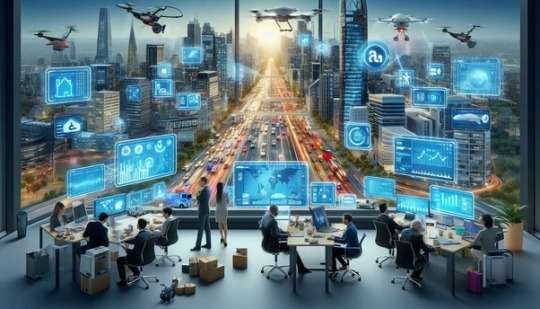
If you’re intrigued by the idea of creating AI-powered personal assistants, understanding the underlying technologies is crucial. That’s where the AI+ Engineer™ certification from AI CERTs comes into play.
Program Overview:
Duration: 8–12 weeks (self-paced)
Modules: Dive into AI fundamentals, machine learning, NLP, speech recognition, and system integration to build a comprehensive skill set.
Key Benefits:
Hands-On Learning: Get practical experience in developing intelligent systems using machine learning and NLP skills that are directly applicable to building personal assistants.
Expertise Development: Master the art of creating personalized assistant systems and learn how to deploy AI models that enhance productivity and user interaction.
Why It’s Relevant:
This certification will equip you with the technical know-how to design and optimize AI-powered personal assistants. With a focus on NLP and machine learning, it’s an essential stepping stone for anyone looking to thrive in this rapidly growing field.
The AI+ Engineer™ certification provides essential skills for developing AI-powered assistants.
Next, let’s explore the impact of AI personal assistants in healthcare.
The Impact of AI Personal Assistants in Healthcare
One of the most promising areas for AI-powered personal assistants is healthcare. They’re not just changing how patients interact with their care but also streamlining operations for healthcare professionals. Here’s how:
Patient Monitoring: Virtual assistants can keep tabs on health metrics, sending alerts for any abnormalities. This can lead to quicker interventions and improved patient outcomes.
Appointment Management: They simplify the scheduling process, reducing no-show rates and ensuring patients get the care they need when they need it.
Medication Management: By providing reminders for medication intake and managing refills, these assistants help improve adherence to treatment plans, ultimately leading to better health outcomes.
AI personal assistants are revolutionizing healthcare by improving patient management and outcomes.
Now, let’s consider the ethical implications of AI technology.
Ethical Considerations in AI Development
As we embrace the convenience of AI-powered personal assistants, it's essential to consider the ethical implications of their use. Here are some critical areas to think about:
Data Privacy: AI assistants collect vast amounts of personal data to function effectively. It's vital to ensure that this data is stored securely and used responsibly.
Bias in AI: AI systems can inadvertently perpetuate biases present in their training data. Developers must actively work to identify and eliminate bias in their algorithms.
Transparency and Accountability: Users should understand how their data is being used and have recourse if things go wrong. Clear communication and ethical guidelines are essential to building trust.
Addressing ethical considerations is crucial for the responsible development of AI technology.
Finally, let’s explore future trends in AI personal assistants.
Future Trends in AI Personal Assistants
The future of AI personal assistants is exciting and full of possibilities! Here are some trends to watch:
Increased Personalization: As AI algorithms get smarter, we can expect even more tailored experiences that cater to our unique preferences and needs.
Enhanced Contextual Understanding: Future assistants will likely become more adept at understanding context, enabling them to engage in more natural and meaningful conversations.
Integration with IoT Devices: Imagine seamlessly controlling every device in your smart home with a simple voice command. This integration will create a fully connected living experience.
Emotional Intelligence: Future AI assistants may be designed to recognize and respond to users' emotional states, providing support that goes beyond task management.
The future holds promising advancements for AI personal assistants, enhancing their utility and user engagement.
Let’s address some frequently asked questions to clarify common inquiries about AI personal assistants.

Frequently Asked Questions (FAQs)
To further engage with our readers, here are some common questions about AI-powered personal assistants:
1. What are the most popular AI personal assistants available today? Some of the most widely used AI personal assistants include Siri (Apple), Google Assistant, Amazon Alexa, and Microsoft Cortana.
2. How do AI personal assistants improve productivity? They automate repetitive tasks, manage schedules, provide reminders, and can even handle inquiries, allowing users to focus on more complex tasks that require human insight.
3. Can AI personal assistants learn from my behavior? Yes! AI personal assistants utilize machine learning algorithms to analyze your interactions and preferences, enabling them to provide personalized recommendations and improve their responses over time.
4. What skills do I need to develop AI personal assistants? Key skills include programming (Python, Java), understanding machine learning and NLP concepts, and knowledge of data privacy and ethics in AI development.
5. Are there any privacy concerns with using AI personal assistants? Yes, data privacy is a significant concern. Users should be aware of how their data is collected, stored, and used, and should take steps to manage their privacy settings.
Conclusion
AI-powered personal assistants are transforming our daily lives, making tasks simpler and more efficient. As these technologies continue to evolve, they’re becoming an essential part of both our personal and professional environments. If you’re passionate about exploring this exciting field, certifications like the AI+ Engineer™ from AI CERTs can provide the skills and knowledge you need to help shape the future of AI technology.
Whether it’s improving productivity in the workplace, enhancing patient care in healthcare, or providing personalized assistance in our homes, the potential of AI personal assistants is just beginning to be realized.
We’d Love to Hear from You!
Whether you have questions, feedback, or ideas to share about AI-powered personal assistants, don’t hesitate to reach out. Connect with us and let’s explore the future of technology together!
#certificationguide#techcertifications#careeradvancement#careergrowth#professionaldevelopment#inspiration#top10certifications#explore#reblogs#creativity
0 notes
Text
AI-Powered Tools for Enhanced Project Management 2024
Project management is evolving rapidly, with new complexities emerging due to the rise of remote work, increased project scale, and ever-growing data volumes. Traditional project management approaches are no longer enough to handle these complexities efficiently.
Enter Artificial Intelligence (AI), a game-changing technology reshaping the landscape of project management. With AI-powered tools, processes are automated, insights are predictive, and workflows become more efficient, enabling project managers to operate more strategically and achieve successful outcomes.

In this in-depth guide, we’ll explore how AI is enhancing project management, review the top AI-powered tools, provide real-world examples of AI in action, and outline the certifications you need to master AI-powered project management.
What is the Role of AI in Modern Project Management?
AI plays a pivotal role in modern project management by automating repetitive tasks, providing data-driven insights, and enhancing decision-making. AI tools can predict project risks, optimize resource allocation, and streamline workflows, allowing project managers to focus on strategic planning and problem-solving. With features like real-time data analysis, AI improves efficiency and accuracy, helping teams meet deadlines and deliver successful outcomes with greater precision. This technology not only boosts productivity but also enables a more proactive approach to managing complex projects.
Automation of Repetitive Tasks
One of AI's most valuable contributions to project management is automation. Routine tasks such as assigning team roles, tracking progress, and generating status reports can be handled by AI-powered tools, allowing project managers to focus on higher-level strategy and decision-making.
Tools like ClickUp and Wrike automate task assignments by analyzing workloads and deadlines. This minimizes human error and speeds up routine processes, leading to more accurate project timelines and increased team efficiency. By automating these time-consuming tasks, AI frees up project managers to engage more in problem-solving and leadership.
Predictive Analytics for Risk Management
AI-driven predictive analytics use historical data and trends to forecast future risks and project outcomes. This allows project managers to anticipate challenges and take proactive measures to avoid them. Tools like Monday.com and Wrike use AI algorithms to predict delays, resource shortages, and budget overruns.
For example, Wrike's AI-powered features identify potential resource bottlenecks and suggest adjustments, allowing managers to redistribute workloads before delays occur. Predictive insights can help optimize project timelines and prevent costly disruptions, ensuring projects stay on track.
Enhanced Collaboration and Communication
AI also improves team communication and collaboration, especially in hybrid or remote work environments. Integration with platforms like Slack and Microsoft Teams allows AI to facilitate real-time communication, schedule meetings, and send automated updates. AI-driven tools help teams stay aligned and informed without manual intervention.
Furthermore, tools like Reclaim AI enhance collaboration by optimizing team schedules, ensuring enough focus time, and minimizing interruptions. AI can also generate meeting summaries and track key project metrics, streamlining communication and helping teams work together more effectively.
What Are the Best Artificial Intelligence Tools for Project Management?
The best AI tools for your organization will be determined by your specific demands. Here are some questions to consider while looking at various AI-enhanced software:
ClickUp: A Customizable, AI-Driven Workspace
ClickUp is one of the most versatile project management platforms, offering highly customizable dashboards, AI-driven task automation, and predictive insights. It allows project managers to create workflows that best suit their team’s needs, with AI-powered features that automatically assign tasks based on project history and team workloads.
Key Features:
Customizable task management and dashboards.
AI-driven task prioritization and automation.
Integration with over 1,000 apps, including Slack, Trello, and Google Drive.
Best For Teams requiring flexible customization and predictive insights to manage complex workflows.
Wrike: Predictive Insights for Risk Management
Wrike is known for its strong focus on risk prediction and resource management through AI. Its machine learning capabilities analyze project data to predict potential risks and help managers take preemptive actions. Wrike’s AI optimizes resource allocation by analyzing workload patterns and team availability.
Key Features:
Advanced AI for risk prediction and resource management.
Customizable dashboards and real-time project tracking.
Automated task assignments and real-time reporting.
Best For: Teams managing large-scale projects that require advanced risk management and real-time insights.
Monday.com: AI-Driven Visual Workflows
Monday.com is known for its user-friendly interface and AI-powered features that enhance project tracking and task automation. Its AI capabilities predict deadlines, automate repetitive tasks, and help optimize budgets. The platform is ideal for teams looking for a visually intuitive tool to manage projects.
Key Features:
AI-driven deadline forecasting and budget tracking.
Customizable workflows with drag-and-drop functionality.
Integration with various collaboration tools.
Best For: Teams looking for visually dynamic tools that provide AI insights into project timelines and resources.
Asana: AI-Enhanced Task Management
Asana’s AI capabilities are centered around task management and workflow optimization. The platform automates task assignments and provides predictive insights into team performance. Asana integrates seamlessly with collaboration tools like Slack and Dropbox, helping teams stay organized and on track.
Key Features:
AI-driven task assignments and workload tracking.
Custom templates for task management and workflow automation.
Integration with collaboration tools for seamless teamwork.
Best For: Teams that need robust task management with AI-powered automation and insights.
In summary, the best AI tools for project management offer customized workflows, automated task assignments, and predictive insights tailored to your team's unique needs. These platforms enhance efficiency, streamline processes, and optimize resources for better project outcomes.
In the next section, we will explore real-world applications of AI in project management.
Real-World Applications of AI in Project Management

AI is transforming project management by enabling real-time data analysis and predictive insights in various industries. Companies use AI to automate routine tasks, optimize resource allocation, and forecast project risks, improving efficiency and decision-making. AI-driven tools help monitor progress, adjust timelines, and allocate budgets more effectively, ensuring projects stay on track. From construction to software development, AI enhances collaboration, streamlines communication, and reduces human error. These real-world applications empower teams to manage complex projects with greater precision and agility.
Optimized Resource Allocation
Resource allocation is one of the most crucial challenges in project management. AI tools like Forecast and Smartsheet automatically assign resources based on skill sets, availability, and project timelines. This ensures that teams are neither overbooked nor underutilized, leading to more efficient workflows and better project outcomes.
Automated Project Updates and Communication
AI tools like Clockwise and Reclaim AI help optimize meeting schedules and automate project updates. These tools integrate with calendars to ensure that meetings, updates, and focus time are scheduled optimally for maximum productivity. This automation eliminates the need for manual check-ins, freeing up time for more strategic work.
Improved Project Timelines
Tools like Wrike and Monday.com use AI to forecast project timelines and anticipate delays. By analyzing historical project data, AI can recommend adjustments to ensure that projects stay on schedule. This ability to predict and address issues before they arise improves overall project efficiency and success rates.
In summary, AI's real-world applications in project management drive efficiency, accuracy, and collaboration, ensuring smoother project execution.
In the following section, we will explore the challenges organizations face when implementing AI in project management.
Challenges of Implementing AI in Project Management
While AI offers numerous advantages, there are also some challenges to consider when integrating AI-powered tools into project management:
Cost: AI-powered tools can be expensive, especially for small businesses or startups. Many advanced features are locked behind premium pricing plans, making it challenging for smaller teams to access the full benefits of AI.
Learning Curve: AI tools often require training and adaptation. Teams may need time to fully understand how to use these platforms effectively, which can slow down initial implementation.
Data Security: AI-powered tools handle sensitive project data, including timelines, budgets, and resources. Ensuring that these platforms offer robust data security features is critical to protecting sensitive information.
While AI enhances project management, challenges like cost, learning curves, and data security must be carefully addressed. Overcoming these hurdles can unlock the full potential of AI-powered tools for teams of all sizes.
In the next section, we will explore certifications that can enhance your AI project management skills.
Certifications to Enhance Your AI Project Management Skills
To fully leverage AI in project management, professionals should consider earning certifications that focus on integrating AI into workflows. These certifications offer training in automation, predictive analytics, and AI-driven decision-making.
1. AI+ Project Manager™ by AI CERTs
This certification is designed to equip project managers with the knowledge of how to integrate AI into various project management practices. The course covers topics like AI-driven task automation, predictive analytics, and resource optimization to enhance project workflows.
Key Skills: AI-powered task automation, risk management using AI insights, and predictive project analytics.
Ideal For: Project managers looking to incorporate AI technologies into their everyday project management strategies, especially in technology-driven fields.
Course Duration: Self-paced, with flexibility to fit your schedule.
Cost: $300.
Program Highlights: The certification emphasizes practical skills, with a focus on real-world AI applications for improving project outcomes. You will gain a deep understanding of how AI tools can automate decision-making processes, mitigate risks, and streamline operations.
Learn more about the AI+ Project Manager™ certification
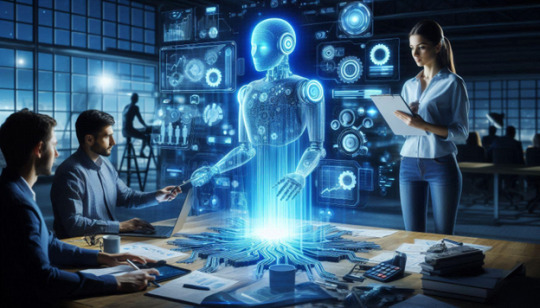
2. Certified AI Project Manager by GSDC
This comprehensive certification covers the integration of AI tools in project management, from risk assessment to resource allocation and automated task management. It provides hands-on training on leveraging AI to improve decision-making and streamline project execution.
Key Skills: AI-driven decision-making, automation in project workflows, AI for resource and risk management.
Ideal For: Mid to senior-level project managers who want to incorporate AI into their project management processes, particularly those managing complex or data-heavy projects.
Course Duration: 5 weeks of intensive training.
Cost: $450.
Program Highlights: This certification delves into practical applications of AI in managing projects, with a focus on optimizing resource allocation and improving team collaboration. Real-world case studies provide insights into AI adoption for project success.
Learn more about the Certified AI Project Manager certification
3. AI-Powered Project Management by PMI
Offered by the Project Management Institute (PMI), this certification program focuses on leveraging AI to enhance project management processes such as project planning, risk management, and collaboration. It's designed for experienced project managers who want to master AI integration within their teams and projects.
Key Skills: AI for project planning, risk prediction and mitigation, AI in team collaboration and communication.
Ideal For: Project management professionals with PMP certification or extensive experience, who want to enhance their skills with AI-driven tools and techniques.
Course Duration: 8 weeks of in-depth training.
Cost: $1,200.
Program Highlights: PMI’s AI certification emphasizes strategic project management, showing how AI can be used to make smarter, data-driven decisions. This program is highly regarded in the industry and offers strong credentials for those looking to specialize in AI-enhanced project management.
Learn more about the AI-Powered Project Management certification by PMI
By pursuing any of these certifications, you'll gain the skills to lead AI-driven project management initiatives, streamline workflows, and improve project outcomes in today's tech-centric business environments. These programs are excellent investments in your future as the demand for AI-savvy project managers continues to grow.
Conclusion
AI-powered tools are reshaping project management by automating routine tasks, predicting risks, and optimizing resource allocation. As AI continues to evolve, project managers who leverage these tools will gain a significant competitive advantage, enabling them to deliver projects faster, more efficiently, and with greater accuracy.
By investing in AI tools and obtaining relevant certifications, project managers can ensure they are well-prepared to lead successful projects in the AI-driven future. Now is the time to embrace AI, stay ahead of the curve, and elevate your project management skills to new heights.
For more information about our certifications and how they can enhance your career, please contact us at [email protected] or visit our website at www.aicerts.io. We look forward to helping you achieve your professional goals.
#professionaldevelopment#careeradvancement#careergrowth#explore#techcertifications#inspiration#top10certifications#reblogs#certificationguide#creativity
0 notes
Text
Blockchain and AI: The Synergy of Two Transformative Technologies
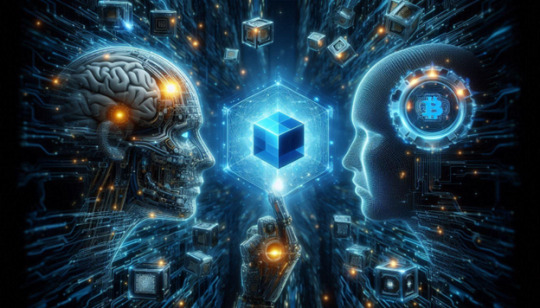
As technology evolves, two strong forces Artificial Intelligence (AI) and Blockchain come together, ready to transform our digital environment. Blockchain provides a transparent and secure database for data storage, whereas AI emulates human problem-solving abilities.
AI, as illustrated by OpenAI's ChatGPT, shows how intelligent robots can learn and accomplish tasks similar to human intellect. According to one professional, "The fusion of AI and Blockchain is not just a technological evolution; it's an evolutionary change that will redefine how we interact with the digital world.".
In this detailed blog, we’ll explore how blockchain and AI work together, their real-world applications, challenges, and certifications to equip professionals for success in this dynamic field.
1. Understanding Blockchain and AI
Blockchain:
Blockchain is a decentralized and immutable ledger that securely records transactions across a distributed network. This technology ensures transparency and eliminates intermediaries, offering a powerful tool for sectors like finance, supply chain, and digital identity management.
Artificial Intelligence:
AI enables machines to perform tasks such as learning, decision-making, and problem-solving. With advancements in machine learning, neural networks, and natural language processing, AI systems now help automate and optimize complex processes, transforming industries such as healthcare, finance, and logistics.
How Blockchain and AI Complement Each Other
1. Data Integrity and AI Model Transparency
AI systems require reliable data for accurate predictions, and blockchain ensures the data’s immutability and traceability. By securing data on a decentralized network, blockchain provides AI models with trustworthy datasets, improving the transparency of AI-driven decisions—especially crucial in industries like finance and healthcare.
2. Decentralization and Secure Data Sharing
While AI often requires vast centralized datasets, blockchain’s decentralized nature allows secure, peer-to-peer data sharing, reducing the risk of data breaches. This combination paves the way for more private and secure AI systems, such as in federated learning models where sensitive data remains decentralized.
3. Automation and Smart Contracts
Blockchain’s smart contracts can be enhanced with AI to automate decision-making processes. For example, AI can predict market trends, automatically triggering smart contracts based on pre-set conditions, making systems more efficient and scalable.
In summary, blockchain and AI complement each other by enhancing data integrity, decentralization, and automation, creating more secure and efficient systems.
Next, we will explore real-world applications of blockchain and AI working together across various industries.
Real-world applications of Blockchain and AI

1. Supply Chain Management
Blockchain ensures end-to-end traceability in supply chains, while AI optimizes logistics, forecasts demand and identifies risks. This combination allows businesses to make informed decisions while ensuring ethical sourcing.
Example: Walmart Canada uses blockchain to manage payments with its freight carriers, automating invoices and eliminating discrepancies. According to Forbes, this initiative has reduced invoice disputes by over 97% and cut payment processing time from weeks to days.
2. Healthcare
Blockchain secures sensitive patient data, while AI analyzes this data for accurate diagnoses and personalized treatments. Together, they ensure better patient outcomes and data privacy.
Example: Walmart Canada’s blockchain system has similarly optimized healthcare supply chains by securely tracking pharmaceuticals, enhancing patient safety.
3. Finance
AI-powered algorithms optimize trading strategies and detect fraud, while blockchain ensures secure and transparent financial transactions. This synergy improves efficiency and reduces fraud in the financial sector.
Example: Blockchain-enabled AI systems are helping financial institutions like JPMorgan enhance fraud detection and streamline cross-border payments.
4. Energy
AI predicts energy consumption patterns, while blockchain allows decentralized energy grids and peer-to-peer energy trading. Together, they enable more sustainable energy systems.
Example: Walmart Canada’s blockchain-powered energy solutions have enhanced data transparency and operational efficiency, providing valuable insights for optimizing energy grids.
In conclusion, the integration of blockchain and AI is driving innovation across industries by improving efficiency, security, and decision-making.
Next, we will explore the challenges organizations face when integrating blockchain and AI technologies.
Challenges of Integrating Blockchain and AI
1. Scalability
Blockchain’s scalability limitations, such as slow transaction speeds, may not align with AI’s need for rapid data processing. Solutions like off-chain processing and Layer 2 protocols are being explored to overcome these issues.
2. Data Privacy
Blockchain ensures data integrity but struggles with large datasets that AI requires. Innovations like zero-knowledge proofs and off-chain storage systems are being investigated to make blockchain more compatible with big data solutions.
3. Regulatory and Standardization Issues
Blockchain and AI technologies are still in their early stages of regulation, with governments working on frameworks to ensure both privacy and security. These regulatory uncertainties can slow down innovation and adoption.
In summary, integrating blockchain and AI presents challenges such as scalability, data privacy, and regulatory concerns that need to be addressed for widespread adoption.
In the next section, we will explore the top certifications for professionals looking to enhance their expertise in both blockchain and AI.
Top Certifications for Blockchain and AI Professionals
To stay ahead in the intersection of blockchain and AI, certifications are key to gaining industry-relevant skills and validation. Here are some of the top certifications available in 2024:
1. Certified Artificial Intelligence (AI) Expert™ by Blockchain Council
This certification offers foundational knowledge in AI technologies like Machine Learning, Deep Learning, and Natural Language Processing, emphasizing how to integrate AI with blockchain for use in various industries.
Key Skills: AI principles, AI-Blockchain integration, machine learning techniques.
Duration: 6 hours.
Cost: $249.
Blockchain Council
2. Master in Artificial Intelligence by Blockchain Council
This advanced certification path combines multiple AI-related certifications, including AI Expert™, Certified Generative AI Expert™, and Certified Prompt Engineer™, focusing on the latest AI technologies and their application in blockchain ecosystems.
Key Skills: Generative AI, AI in blockchain, prompt engineering.
Duration: 26 hours.
Cost: $747.
Blockchain Council
3. Blockchain+ Developer by AI CERTs
This certification emphasizes the skills necessary to build blockchain applications using platforms like Bitcoin and Ethereum. It includes smart contract programming and the integration of AI tools to optimize blockchain development.
Key Skills: Blockchain development, AI integration, smart contract programming.
Duration: Self-paced (project-based learning).
Cost: $200.
AI CERTs
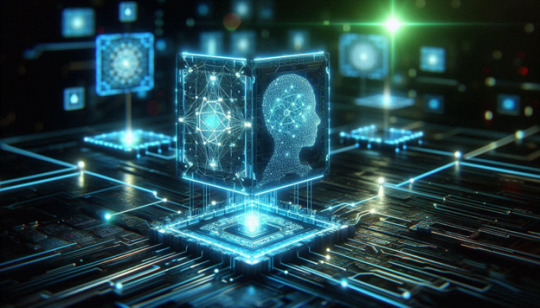
4. Certified Blockchain Architect (CEBA) by 101 Blockchains
This certification helps professionals design scalable blockchain architectures integrated with AI solutions. It covers the deployment of enterprise-grade blockchain systems and AI-driven innovations for dApps.
Key Skills: Blockchain architecture, AI-enhanced scalability.
Duration: Self-paced.
Cost: Subscription-based or single purchase options.
101 Blockchains
5. MIT Sloan Blockchain Technologies: Business Innovation and Application
This program focuses on AI-driven blockchain innovation in business. Participants learn how AI can improve blockchain applications in fields like DeFi, Web3, and business strategy.
Key Skills: AI in blockchain, decentralized finance, Web3.
Duration: 6 weeks.
Cost: $3,500.
Blockchain Technologies
Why These Certifications Matter:
Career Advancement: Certifications in AI and blockchain provide professionals with cutting-edge skills highly sought after in industries like finance, healthcare, and technology.
Industry Recognition: These certifications come from reputable organizations and institutions, giving you globally recognized credentials that can significantly boost your career prospects.
Practical Application: Many of these certifications include project-based learning and hands-on experience, ensuring that learners can apply their knowledge in real-world blockchain and AI scenarios.
In conclusion, acquiring these certifications will equip you with the knowledge and skills needed to excel in the rapidly evolving intersection of AI and blockchain, opening opportunities in sectors that are increasingly adopting these transformative technologies.
Conclusion
The fusion of blockchain and AI represents a monumental shift in how we process, store, and analyze data. Blockchain provides the trust and security that AI systems need, while AI brings intelligence and automation to decentralized applications. Together, they are transforming industries from healthcare and finance to energy and supply chain management.
As these technologies continue to evolve, professionals with expertise in both fields will be in high demand. By obtaining relevant certifications and staying ahead of the curve, individuals can position themselves to thrive in this exciting new landscape.
Blockchain and AI are not just buzzwords; they are technologies that, when combined, will fundamentally reshape the future of industries and society at large.
For more information or to explore how AI CERTs can help you advance your skills in blockchain and AI technologies, feel free to Contact Us our team is here to assist you on your certification journey!
#top10certifications#careeradvancement#techcertifications#careergrowth#explore#professionaldevelopment#certificationguide#inspiration#reblogs#creativity
0 notes
Text
How AI is Shaping the Future of Cybersecurity

As cyber threats become more sophisticated, the strategies and tools used to defend against them must evolve too. Artificial Intelligence (AI) is revolutionizing cybersecurity by automating threat detection, analyzing massive datasets in real time, and predicting future threats. This blog dives into how AI transforms cybersecurity and highlights the top certifications that will help professionals stay relevant in this fast-paced field.
What is cybersecurity?
Cybersecurity refers to protecting computers, servers, networks, and data from unauthorized access, theft, damage, or attacks. It encompasses a variety of technologies, processes, and practices designed to safeguard digital systems and ensure the confidentiality, integrity, and availability of information. Key aspects of cybersecurity include:
Network Security: Protecting networks from intrusions and attacks.
Information Security: Ensuring the protection of data, whether in storage or transit.
Application Security: Securing software applications from vulnerabilities.
Endpoint Security: Protecting devices like computers and mobile phones from threats.
Identity Management: Controlling user access to resources and data.
Incident Response: Preparing for and responding to security breaches or attacks.
Risk Management: Identifying, assessing, and mitigating security risks.
Cybersecurity is essential for safeguarding sensitive information and maintaining trust in digital systems, making it a critical component for businesses, governments, and individuals alike.
Now let’s explore The Role of AI in Cybersecurity in the next section.
The Role of AI in Cybersecurity
AI is changing how cybersecurity works by improving the speed and accuracy of threat detection. With the ability to analyze enormous amounts of data, AI can spot unusual patterns and behaviors that humans or traditional systems might miss. This enables organizations to respond proactively to potential cyber threats before they can do significant damage.
Key Areas Where AI is Making an Impact:
Faster Threat Detection: AI tools quickly analyze network traffic, data flows, and user behaviors, identifying potential risks in real time.
Automated Responses: AI can take immediate action to isolate affected systems or alert cybersecurity teams, reducing the impact of attacks.
Learning and Evolving: AI models learn from past incidents, improving their ability to detect and prevent future attacks by recognizing new patterns.
In short, AI enhances both the speed and intelligence of cybersecurity defenses, making organizations more resilient against a growing number of cyber threats.
Now that we’ve seen how AI helps detect threats, let’s explore how it also assists in preventing sophisticated cyberattacks.
AI for Detecting and Preventing Cyber Threats
One of the biggest challenges for traditional cybersecurity systems is detecting unknown threats, often referred to as zero-day vulnerabilities. These are new and unfamiliar attack methods that don’t yet have a signature or a rule in the system. AI uses machine learning to identify these new threats by looking for abnormal patterns in data, behaviors, and network traffic.
Key Contributions of AI in Cyber Threat Detection:
Zero-Day Threat Detection: AI identifies unfamiliar vulnerabilities by analyzing unusual behaviors and abnormal traffic patterns.
Continuous Network Monitoring: AI monitors networks in real time, ensuring that suspicious activity is flagged and addressed immediately.
With AI constantly learning and evolving, it helps security teams stay ahead of attackers by predicting and preventing threats as they emerge.
Along with detection, AI also plays a key role in automating responses to potential threats. Let’s take a closer look at AI-driven automation.
AI-Powered Automation in Cybersecurity

As the frequency and complexity of cyberattacks increase, relying solely on human teams to manage cybersecurity is no longer feasible. AI-powered automation allows organizations to respond to threats quickly and efficiently without human intervention.
Benefits of AI-Powered Automation:
Instant Response: AI can isolate compromised devices, block malicious traffic, and alert the security team, all in real time.
Reduced Human Error: By automating routine tasks like monitoring, AI reduces the likelihood of human mistakes.
Improved Efficiency: AI allows security teams to focus on more critical tasks by handling routine, repetitive tasks such as scanning and threat detection.
With AI handling the heavy lifting, cybersecurity teams can be more strategic and proactive in their defense efforts.
Automation is a significant advantage, but AI also excels at analyzing behavior to detect more complex security threats. Let’s see how behavioral analysis works in cybersecurity.
AI and Behavioral Analysis in Cybersecurity
AI’s ability to analyze user and system behaviors in real time is one of its most powerful features. By understanding what "normal" behavior looks like, AI can quickly detect deviations that may signal a security threat, whether it's an external attack or an insider threat.
How AI Uses Behavioral Analysis:
User Behavior Analytics (UBA): AI tracks how users interact with systems and flags unusual activities, like a sudden spike in login attempts, which could indicate compromised accounts.
Network Traffic Monitoring: AI analyzes network traffic patterns to detect irregularities, such as data exfiltration or DDoS attacks.
AI’s behavioral analysis enables organizations to detect even the most subtle threats, offering a deeper level of protection that traditional systems might miss.
As defenders use AI to secure systems, cybercriminals are also leveraging AI to carry out more advanced attacks. Let’s explore how AI is being used by both sides of the cybersecurity battle.
AI vs. Cybercriminals: The Growing Arms Race
Just as AI enhances defenses, it’s also being used by cybercriminals to launch more sophisticated attacks. From AI-powered phishing campaigns to malware that adapts to evade detection, attackers are finding new ways to exploit AI technologies.
How Cybercriminals Are Using AI:
AI-Driven Phishing: Cybercriminals are using AI to create more convincing phishing emails, making it harder for victims to identify fraudulent messages.
Adaptive Malware: AI can help attackers design malware that evolves, bypassing traditional detection systems by learning from the defenses it encounters.
The use of AI by both defenders and attackers makes cybersecurity an ongoing battle, with each side continually trying to outpace the other.
To stay competitive in this rapidly evolving field, cybersecurity professionals need the right skills and certifications. Let’s explore the most popular certifications that focus on AI in cybersecurity.
Top Certifications for AI in Cybersecurity
As AI plays a more significant role in cybersecurity, professionals need to equip themselves with the right credentials to manage AI-driven tools effectively. Here are the most sought-after certifications for AI in cybersecurity:
1. Certified Information Systems Security Professional (CISSP)
The CISSP certification covers a wide range of cybersecurity topics, including AI’s role in enhancing security defenses. It’s a great choice for those looking to understand how AI fits into overall security strategies. Learn more about CISSP here.
2. AI+ Security Certification from AICerts
This certification is designed to help professionals master the implementation of AI in cybersecurity, focusing on AI-driven defense mechanisms, ethical AI usage, and AI-based threat analysis. This program is perfect for those looking to specialize in AI security solutions. Learn more about AI+ Security Certification here.

3. Certified Ethical Hacker (CEH)
The CEH certification teaches professionals how to think like hackers, including AI-powered ethical hacking techniques to predict and prevent attacks. Learn more about CEH here.
4. Certified Information Security Manager (CISM)
The CISM certification focuses on managing enterprise security systems and includes AI-driven risk management techniques. Explore CISM here.
These certifications help professionals stay competitive in the fast-growing AI cybersecurity field.
With AI playing an increasingly crucial role in cybersecurity, its influence is expected to grow even further. Let’s take a look at what the future holds for AI in this space.
The Future of AI in Cybersecurity
AI is set to become even more critical in cybersecurity, offering predictive capabilities and helping organizations stay one step ahead of cybercriminals. Here are some trends we can expect to see:
What’s Next for AI in Cybersecurity:
Predictive Threat Analysis: AI will become even better at predicting cyberattacks, allowing organizations to take preventive action before a breach occurs.
Collaboration Between Humans and AI: While AI automates many tasks, human cybersecurity experts will still be needed to handle complex strategic decisions.
Evolving AI Systems: AI will continue to learn from past incidents, improving its ability to defend against ever-evolving cyber threats.
The future of cybersecurity will rely heavily on AI’s ability to anticipate and prevent attacks, making it an indispensable tool for organizations.
Conclusion
AI is revolutionizing cybersecurity by providing faster detection, automating responses, and improving threat prediction. As cyber threats grow in complexity, AI’s role will continue to expand, helping organizations maintain strong defenses against a constantly evolving threat landscape. For professionals looking to stay relevant, obtaining certifications in AI cybersecurity is critical.
By staying informed and earning certifications, cybersecurity professionals will be well-equipped to navigate the AI-driven future of digital defense.
FAQ Section
1. How does AI improve cybersecurity? AI automates threat detection and response, allowing for faster and more accurate identification of risks. It also analyzes large datasets in real time and predicts future threats, improving overall efficiency.
2. Can AI detect unknown threats? Yes, AI is particularly effective at detecting unknown threats, often called zero-day vulnerabilities, by recognizing abnormal patterns and behaviors that may signal an attack.
3. What are the best certifications for AI in cybersecurity? Some of the top certifications include Certified Information Systems Security Professional (CISSP), Certified Artificial Intelligence Practitioner (CAIP), and Certified Ethical Hacker (CEH), which focus on blending AI with cybersecurity strategies.
Ready to take the next step with our AI+ Security certification? Reach out to us! Email us at [email protected]. We can’t wait to connect and help you secure your future!
#top10certifications#certificationguide#techcertifications#careergrowth#explore#inspiration#professionaldevelopment#reblogs#careeradvancement#creativity
0 notes
Text
Data-Driven Decision Making: Harnessing Analytics for Business Growth

In today’s digital landscape, businesses are inundated with vast data. Data has become a crucial resource for driving strategic decisions, from customer behavior and purchase patterns to operational performance and market trends.
Data-driven decision-making (DDDM) is revolutionizing industries by enabling organizations to make informed, evidence-based choices that minimize risks and enhance efficiency. But how can businesses fully capitalize on analytics to ensure they are maximizing the potential of their data?
In this blog, we will go through the significance of DDDM, its practical applications, challenges, and certifications that can help professionals excel in this data-centric approach.
Why Data Drive Decision Making is Essential?
In a rapidly evolving world, businesses must be adaptable and well-informed. Traditional decision-making, often guided by intuition or experience, is becoming less reliable as markets, consumer expectations, and technology advance.
Data-driven decision-making provides a more accurate and insightful approach by focusing on real-time information, predictive analytics, and measurable results. Organizations that prioritize data in their strategic processes stand to gain several advantages:
1. Higher Precision and Accuracy
Making decisions grounded in data, rather than relying on instincts or assumptions, allows businesses to achieve more precise outcomes. For example, analyzing customer behavior data can help refine products and services to match market demand better.
2. Enhanced Risk Management
Data provides predictive insights that allow companies to anticipate potential risks and take proactive steps. For instance, analyzing economic data can help a business prepare for market downturns, enabling them to adjust strategies in advance.
3. Faster and More Agile Decision-Making
In today’s fast-moving business environment, agility is key. Real-time data empowers organizations to make quicker, better-informed decisions. Automated analytics tools can provide immediate insights, allowing companies to respond to changes without delay.
4. Boosted Innovation and Growth
Access to comprehensive datasets enables businesses to innovate by identifying new opportunities, unmet customer needs, and potential product enhancements. Companies that use data to foster innovation are more likely to experience sustained growth and competitiveness.
5. Optimized Operations and Cost Efficiency
Data-driven insights reveal inefficiencies in processes and resource allocation, enabling businesses to streamline operations, reduce waste, and cut costs. This ultimately leads to improved profitability.

How Analytics Drives Business Success Across Key Areas
To fully realize the benefits of data, businesses must integrate analytics into various departments. Below are some key areas where analytics plays a pivotal role in achieving success:
1. Customer Insights and Personalization
Understanding customer behavior is vital to creating personalized experiences that drive engagement and loyalty. Customer analytics provides a comprehensive view of the customer journey, enabling businesses to:
Segment audiences based on preferences, behaviors, and demographics.
Create personalized marketing campaigns tailored to specific customer groups.
Anticipate future purchasing trends and adjust product offerings accordingly.
For example, streaming platforms like Netflix use data analytics to recommend content based on individual viewing habits, enhancing user satisfaction and retention.
2. Operational Efficiency
Data analytics helps optimize business operations by pinpointing inefficiencies. Businesses can analyze data on production timelines, supply chain processes, and employee performance to improve productivity. Key examples include:
Supply Chain Optimization: Leveraging data to reduce costs, streamline logistics, and enhance delivery times.
Process Automation: Using data to identify repetitive tasks that can be automated, freeing employees for more strategic work.
Amazon, for instance, utilizes data analytics to optimize its supply chain and logistics, reducing operational costs while improving delivery efficiency.
3. Financial Management
Data analytics is crucial in financial planning and management. By analyzing financial data, businesses can:
Conduct accurate forecasting and budgeting based on historical trends.
Use predictive analytics to identify areas for cost reduction.
Assess investment opportunities by examining market conditions and financial performance.
Investment firms, for example, heavily rely on data analytics to predict stock performance, assess market trends, and optimize portfolio decisions.
4. Marketing and Sales Optimization
Marketing and sales teams can use data to improve campaign effectiveness, drive customer acquisition, and increase revenue. Analyzing marketing data allows businesses to:
Measure the effectiveness of various marketing channels, such as social media and email campaigns.
Target high-value leads and develop personalized sales strategies.
Track customer engagement metrics to optimize messaging and boost conversion rates.
For example, Salesforce uses data analytics and AI to help businesses target customers more effectively, automate sales processes, and optimize marketing campaigns, leading to improved lead management and higher conversion rates.
5. Predictive Analytics for Strategy Development
Predictive analytics uses historical data to forecast future outcomes, enabling organizations to make proactive strategic decisions. Benefits include:
Market Forecasting: Analyzing economic trends and consumer sentiment to stay ahead of emerging opportunities.
Resource Planning: Using data to forecast demand and align resources efficiently.
Workforce Management: Predicting staffing needs to prevent labor shortages or excesses during peak periods.
Retailers, for instance, Airbnb uses predictive analytics to optimize pricing and enhance booking rates. Zara and H&M anticipate fashion trends and adjust inventory, reducing overstock and boosting sales, keeping them ahead in the fast-fashion market.
Analytics is transforming businesses across all key areas, from enhancing customer experiences to optimizing operations and financial management. By leveraging data, companies can make informed decisions, anticipate market changes, and create personalized strategies that drive success. As these examples demonstrate, data-driven approaches enable businesses to stay competitive and responsive in a rapidly evolving landscape.
In the next section, we'll explore the essential steps to implement data-driven decision-making, helping your organization harness the power of analytics effectively.
Steps to Implement Data-Driven Decision Making
For businesses transitioning to DDDM, a structured implementation process is key. Here are the steps to integrate data-driven decision-making into your organization:
1. Define Business Objectives
Identify the goals or challenges that DDDM will address. Whether it’s improving customer satisfaction, enhancing marketing, or streamlining operations, having a defined objective will help focus data collection and analysis efforts.
2. Collect and Organize Data
Gather high-quality data from multiple sources—both internal and external. Organize this data in a centralized system, like a data warehouse, to ensure it’s accessible for analysis.
3. Use Advanced Analytics Tools
Select the right tools to analyze data and generate insights. Implement business intelligence (BI) tools such as Tableau, Microsoft Power BI, or Google Analytics for data visualization and reporting.
4. Integrate Insights into Decision-Making
Once data is analyzed, embed insights into everyday decision-making processes. Encourage a data-driven culture where all employees use data to support their decisions.
5. Continuously Monitor and Refine
DDDM is not a one-time activity. Continuously monitor metrics, evaluate strategies, and use real-time data to improve decision-making processes.
Implementing data-driven decision-making (DDDM) requires a strategic approach, from defining clear business objectives to continuously refining processes. By following these steps, businesses can effectively harness data to make informed decisions that align with their goals, drive innovation, and create a competitive edge.
However, despite its advantages, DDDM also presents several challenges. In the next section, we'll explore the common obstacles organizations face when adopting data-driven decision-making and how to overcome them.
Challenges of Data-Driven Decision Making
Despite the clear advantages of DDDM, businesses may face challenges along the way:
Remember: Poor-quality data can lead to inaccurate conclusions. Ensuring data integrity is essential for reliable decision-making.
Security and Privacy: Handling large datasets, especially with personal information, requires stringent security protocols to prevent data breaches.
Information Overload: With vast amounts of data available, it can be difficult to focus on the most relevant insights.
Skill Gaps: Organizations may need to train or hire data specialists to manage, analyze, and interpret data effectively.
Addressing these challenges is crucial for successful data-driven decision-making, ensuring that organizations can fully leverage their data assets while maintaining security and clarity.
In the next section, we'll explore certifications that can enhance your team's data analytics capabilities.
Certifications for Data-Driven Decision Skills
To excel in DDDM, professionals can enhance their skills through specialized certifications. Here are three top certifications to consider:
1. Certified Business Intelligence Professional (CBIP) by TDWI
A globally recognized certification, the CBIP equips professionals with the skills to implement and manage business intelligence systems, turning data into actionable insights.
Core Topics: Data integration, data warehousing, predictive analytics, and reporting.
Who Should Pursue It: BI professionals, data analysts, and managers seeking to lead data-driven initiatives.
Explore more details.
2. Google Data Analytics Professional Certificate
Google’s data analytics program offers hands-on experience in collecting, cleaning, and analyzing data. The course covers key analytics tools like Google Analytics, SQL, and data visualization platforms.
Core Topics: Data collection, data analysis, visualization, and storytelling with data.
Who Should Pursue It: Beginners and professionals aiming to develop strong data analytics skills for business decision-making.
Learn more here.
3. AI+ Robotics™ by AI CERTs
This certification provides in-depth knowledge of how data-driven strategies are applied in robotics and AI. It is designed for professionals looking to integrate AI-driven analytics into business decisions.
Core Topics: AI in robotics, data-driven automation, and AI analytics.
Who Should Pursue It: Data scientists, AI engineers, and business leaders focused on AI and robotics integration.
Explore more details.

Use the coupon code NEWCOURSE25 to get 25% OFF on AI CERT’s certifications.Click Here to explore all the courses and enroll today.
Pursuing these certifications can significantly enhance your expertise in data-driven decision-making, equipping you with the skills needed to thrive in today's data-centric landscape. Investing in your education through these programs will empower you to drive impactful business strategies.
Conclusion
Data-driven decision-making is an essential approach for businesses seeking to thrive in today’s data-rich world. By harnessing analytics, companies can gain deeper insights into customer behavior, streamline operations, and make more informed, strategic decisions.
While challenges like data quality and privacy concerns exist, the benefits of DDDM far outweigh the obstacles. Organizations that invest in developing a data-driven culture, along with the right tools and skills, will be better positioned to succeed in an increasingly competitive market.
Ready to take the next step in your AI journey? Reach out to us today and let’s unlock the future together!
#top10certifications#professionaldevelopment#techcertifications#careeradvancement#careergrowth#explore#inspiration#reblogs#creativity#certificationguide
0 notes
Text
Essential Blockchain Development Tools for 2024

As blockchain technology continues to evolve and gain mainstream adoption, developers are increasingly required to build secure, scalable, and efficient blockchain applications.
Whether you’re working on decentralized applications (dApps), smart contracts, or blockchain platforms, the right tools can streamline your development process.
This blog highlights the essential blockchain development tools for 2024, ensuring you stay ahead in this dynamic field.
1. Remix IDE
Overview
Remix IDE is one of the most widely used Integrated Development Environments (IDEs) for developing smart contracts, particularly for Ethereum-based applications. It’s a web-based tool that allows developers to write, compile, and deploy smart contracts with ease.
Key Features
Solidity compiler and debugger.
Supports testing and deployment directly to the blockchain.
Intuitive interface for new developers and seasoned experts alike.
Supports plugins to extend functionality.
Why You Need It
Remix IDE is essential for smart contract development on Ethereum. Its in-browser accessibility, combined with built-in testing and deployment tools, makes it the go-to for Ethereum developers.
2. Truffle Suite
Overview
Truffle serves as a development environment, testing framework, and asset pipeline for Ethereum.it offers a complete suite of tools that make developing decentralized applications (dApps) more efficient, from managing contracts to running automated tests.
Key Features
Smart contract management.
Automated testing for contracts.
Scriptable deployment and migrations framework.
Network management for deploying dApps to public and private networks.
Why You Need It
Truffle accelerates the blockchain development process by simplifying contract management and testing. It’s a great tool for app developers who want to streamline their development workflow.
3. Ganache
Overview
Ganache is a tool for Ethereum development that allows you to deploy contracts, develop applications, and run tests on a personal blockchain. It’s part of the Truffle Suite but can also be used independently.
Key Features
Instantly create and manage your personal Ethereum blockchain.
Run automated and manual tests on dApps.
Inspect and debug smart contracts in real-time.
Supports Ethereum and Corda blockchain platforms.
Why You Need It
For developers looking to test their blockchain applications in a controlled environment, Ganache offers the perfect testing ground. It mimics the behavior of the Ethereum blockchain, allowing you to test without incurring real-world costs.
4. Hardhat
Overview
Hardhat is a development environment specifically designed for Ethereum developers. It focuses on making the development of smart contracts as smooth as possible by offering an array of debugging, compiling, and testing features.
Key Features
Advanced debugging and Solidity stack traces.
Integrated plugins for extending functionality.
Built-in support for TypeScript.
Flexible task automation.
Why You Need It
Hardhat is ideal for developers looking for a robust tool that provides a higher degree of control and flexibility during the Ethereum development process. Its advanced debugging capabilities make it a strong contender in the blockchain development toolkit.
5. Infura
Overview
Infura provides Ethereum and IPFS infrastructure, allowing developers to connect to the Ethereum network without needing to run their nodes. It’s widely used in dApp development for deploying and interacting with smart contracts.
Key Features
Access Ethereum and IPFS networks without running full nodes.
Scalable infrastructure for high-volume applications.
Real-time data and transaction monitoring.
Simple API for blockchain interaction.
Why You Need It
Infura eliminates the complexity of managing blockchain nodes, allowing developers to focus on building their applications. It’s an indispensable tool for scaling decentralized apps on Ethereum.
6. Metamask

Overview
Metamask is a browser extension and mobile app that functions as a wallet for Ethereum and other ERC-20 tokens. It enables users to interact with decentralized applications directly from their web browser, making it essential for dApp developers and users alike.
Key Features
Secure wallet for Ethereum and other tokens.
Built-in dApp browser for seamless interaction.
Private key and seed phrase management.
Supports multiple blockchains and test networks.
Why You Need It
Metamask is essential for developers working on dApps that need user interaction. It allows for easy integration of wallet and transaction functionalities within blockchain applications.
7. Solidity
Overview
Solidity is the most commonly used programming language for writing smart contracts on Ethereum. It’s a statically typed language similar to JavaScript and is optimized for creating secure smart contracts.
Key Features
Static typing for security.
Extensive developer community and documentation.
Optimized for writing decentralized applications.
Supports complex user-defined types and libraries.
Why You Need It
For Ethereum-based blockchain development, knowing Solidity is non-negotiable. As the de facto smart contract language, it’s used for building everything from DeFi protocols to NFT marketplaces.
8. Hyperledger Fabric
Overview
Hyperledger Fabric is an enterprise-grade permissioned blockchain framework hosted by the Linux Foundation. It’s designed to support enterprise-level blockchain applications requiring high degrees of security, performance, and scalability.
Key Features
Modular architecture for flexibility.
Permissioned membership for higher security.
Supports smart contracts in multiple programming languages.
Scalable for enterprise needs.
Why You Need It
Hyperledger Fabric is crucial for developers working on private blockchain applications that require a higher level of governance and control. It’s ideal for industries like finance, healthcare, and supply chain management.
9. OpenZeppelin
Overview
OpenZeppelin is a platform that provides secure smart contract libraries, auditing services, and development tools. It’s widely used to build and secure decentralized applications across Ethereum and other blockchain platforms.
Key Features
Standardized, reusable smart contract templates.
Automated contract verification.
Security audit tools.
Extensive developer community.
Why You Need It
OpenZeppelin is essential for developers looking to enhance the security of their blockchain applications. Its secure libraries and auditing services are key to building trust in decentralized systems.
10. Alchemy
Overview
Alchemy is a blockchain development platform that provides infrastructure and tools for building and running blockchain applications. It offers enhanced APIs, analytics, and developer tools to optimize blockchain performance.
Key Features
Real-time monitoring of blockchain transactions.
Advanced API for blockchain interaction.
Built-in analytics tools for performance monitoring.
Scalable infrastructure for large-scale dApps.
Why You Need It
Alchemy’s robust infrastructure and developer tools allow blockchain projects to scale efficiently. It’s a great platform for developers working on complex, large-scale blockchain applications
These tools are essential for developers navigating the blockchain landscape, providing the infrastructure, development environments, and security measures needed to build, test, and deploy applications effectively. Next, explore the suggested certifications to help you master these tools and advance your blockchain development career.
Suggested Certifications:
1. Certified Blockchain Developer by EC-Council
Certified Blockchain Developer Gives comprehensive knowledge of blockchain development concepts including blockchain architecture, smart contracts, and blockchain platforms.
2. Certified Ethereum Developer by Blockchain Council
Certified Ethereum Developer specializes in Ethereum blockchain technology with a focus on Ethereum programming, smart contracts, and decentralized applications.
3. AI+ Blockchain Developer™ by AI CERTs
AI+ Blockchain Developer™ by AI CERTs provides a thorough understanding of multiple blockchain platforms like Ethereum, Bitcoin, and Hyperledger, covering the development and management of blockchain-based applications.

Use the coupon code NEWCOURSE25 to get 25% OFF on AI CERT’s certifications. Click Here to explore all the courses and enroll today.
Conclusion
As the blockchain landscape continues to expand in 2024, these essential tools will be key for developers aiming to build robust, secure, and scalable applications. Whether you're focused on Ethereum development, smart contracts, or enterprise blockchain solutions, these tools provide the foundation needed to succeed in the blockchain industry.
Stay ahead of the curve by mastering these platforms and incorporating them into your development process.
#top10certifications#professionaldevelopment#careergrowth#techcertifications#explore#inspiration#careeradvancement#reblogs#creativity
0 notes
Text
Exploring the Role of AI in Autonomous Vehicles and Smart Cities
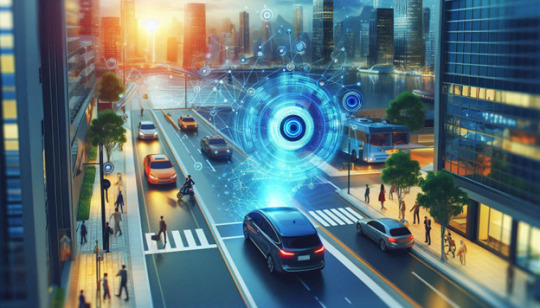
Artificial Intelligence (AI) is transforming the way we interact with technology, and nowhere is this more evident than in the development of autonomous vehicles and smart cities. These innovations are poised to reshape urban landscapes, improve transportation systems, and enhance the quality of life for citizens around the world.
By leveraging AI, both autonomous vehicles and smart cities can operate more efficiently, sustainably, and safely. This blog explores the critical role AI plays in these two areas, the benefits it brings, and the challenges that must be overcome to realize their full potential.
AI in Autonomous Vehicles
Blockchain for social good uses its transparency, security, and decentralization to tackle global issues like financial inclusion, supply chain transparency, and humanitarian aid. It’s driving positive change across industries by promoting ethical practices and efficient resource management.
Next, let’s dive into how AI is revolutionizing autonomous driving technologies, reshaping the future of transportation.
1. Autonomous Driving Technologies
Autonomous vehicles (AVs), also known as self-driving cars, rely heavily on AI to navigate the complex environment of roads, traffic signals, pedestrians, and other vehicles.
The key technology driving this innovation is machine learning (ML), a subset of AI that allows systems to learn from data and make decisions based on it.
Key AI Technologies in Autonomous Vehicles:
Computer Vision: AI enables vehicles to "see" their surroundings by analyzing data from cameras, radar, LiDAR, and sensors. Computer vision helps AVs recognize objects such as pedestrians, road signs, and other cars, ensuring they can react appropriately.
Deep Learning: This type of AI allows autonomous vehicles to process vast amounts of data and improve decision-making over time. Deep learning algorithms analyze data from sensors to predict movements, detect obstacles, and optimize driving routes.
Natural Language Processing (NLP): NLP is used in voice-activated controls, allowing passengers to interact with the vehicle through speech. This enhances user experience and creates a safer driving environment by reducing distractions.
2. Benefits of Autonomous Vehicles
AI-powered autonomous vehicles offer numerous advantages that are expected to revolutionize transportation:
a) Increased Safety:
AI can significantly reduce human error, which is the leading cause of road accidents. By using real-time data to make precise decisions, autonomous vehicles can react faster and more accurately to hazards, reducing the likelihood of collisions.
b) Reduced Traffic Congestion:
AI can analyze traffic patterns and optimize routes to avoid congestion. Through vehicle-to-vehicle (V2V) communication, autonomous vehicles can share information about traffic conditions, enabling smoother traffic flow and reducing travel times.
c) Lower Emissions:
By optimizing driving behavior and minimizing unnecessary acceleration or braking, AI can help reduce fuel consumption and lower carbon emissions. Additionally, the rise of electric autonomous vehicles will further reduce the environmental impact of transportation.
d) Enhanced Mobility:
AI-driven vehicles can provide mobility solutions for individuals who are unable to drive, such as the elderly or people with disabilities. Autonomous taxis and ride-sharing services could also increase transportation access for underserved areas, improving urban mobility.
3. Challenges and Ethical Considerations
While autonomous vehicles offer significant benefits, several challenges and ethical concerns must be addressed before widespread adoption:
a) Data Privacy:
Autonomous vehicles rely on vast amounts of data to operate, including real-time GPS locations, travel history, and even personal information such as biometrics. Ensuring that this data is securely stored and handled is essential to prevent breaches and maintain privacy.
b) Regulation and Liability:
Determining responsibility in the event of an accident involving an autonomous vehicle remains a challenge. Should the manufacturer, software developer, or the owner of the vehicle be held accountable? Clear legal frameworks are needed to address these issues.
c) Safety in Mixed Traffic:
Until fully autonomous vehicle fleets are on the road, self-driving cars will need to navigate environments with both human-driven vehicles and pedestrians. Ensuring seamless interaction between autonomous and traditional vehicles is a complex task that requires advanced AI systems.
d) Ethical Decision-Making:
AI must make split-second decisions in critical situations. For example, in the event of an unavoidable accident, how should the vehicle prioritize the safety of the driver versus pedestrians or other drivers? Developing ethical guidelines for these scenarios is crucial.
AI is transforming autonomous vehicles by enhancing safety, efficiency, and accessibility, promising a future where self-driving cars will be a common reality on our roads. However, addressing challenges such as data privacy, regulation, and ethical decision-making is essential to fully realize their potential.
In the next section, we’ll explore how AI is playing a pivotal role in the evolution of smart cities, driving innovations that enhance urban living and connectivity.
AI in Smart Cities
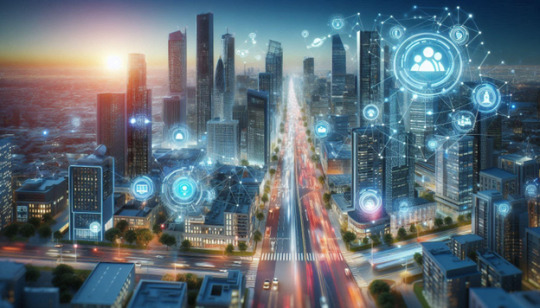
What Are Smart Cities?
A smart city integrates digital technology and data to improve urban infrastructure and enhance the quality of life for residents. AI plays a crucial role in analyzing data from various sources, enabling real-time decision-making, and optimizing urban systems such as energy, water, transportation, and waste management.
AI Applications in Smart Cities
AI is being applied to many aspects of urban living to make cities more efficient, sustainable, and livable. Some key areas include:
a) Smart Traffic Management:
AI helps manage traffic flow more efficiently by analyzing data from road sensors, traffic cameras, and GPS devices. By optimizing traffic lights and controlling congestion, AI can reduce travel times and improve air quality. In cities like Singapore and Barcelona, AI-driven traffic management systems have already reduced congestion significantly.
b) Energy Efficiency:
AI can help cities optimize energy consumption by monitoring and analyzing data from smart grids. This enables better demand forecasting and allows for more efficient energy distribution. Smart buildings equipped with AI-powered systems can adjust lighting, heating, and cooling based on occupancy, reducing overall energy usage.
c) Public Safety:
AI-powered surveillance systems can analyze video footage to detect suspicious activities, enhance crowd control, and improve response times in emergencies. Some smart cities use AI-driven facial recognition technology to aid law enforcement and enhance public safety.
d) Waste Management:
AI-powered waste management systems can analyze waste production patterns and optimize collection routes, reducing operational costs and environmental impact. Some cities are using AI to develop smart recycling systems that automatically sort materials, improving recycling rates.
e) Air Quality Monitoring:
AI systems in smart cities can analyze data from sensors to monitor pollution levels and predict changes in air quality. This allows city authorities to take proactive measures to reduce pollution and protect public health.
Smart Cities and Sustainability
Sustainability is a major focus of smart city initiatives, and AI plays a key role in driving green innovations:
a) Optimizing Resource Use:
AI enables smart cities to optimize the use of natural resources, such as water and electricity, by monitoring consumption patterns and reducing waste. For example, AI-driven water management systems can detect leaks in real time and adjust water distribution based on demand.
b) Promoting Renewable Energy:
AI helps cities transition to renewable energy sources by optimizing the integration of solar and wind power into the grid. By analyzing weather patterns and energy demand, AI systems can ensure a smooth transition from traditional energy sources to renewables, reducing carbon footprints.
c) Green Transportation:
AI is integral to the development of green transportation systems, such as electric autonomous vehicles, AI-powered public transportation, and smart bike-sharing programs. By reducing reliance on fossil fuels and promoting clean energy alternatives, smart cities can significantly reduce pollution.
Challenges in Implementing AI in Smart Cities
Although the potential benefits of AI in smart cities are substantial, several challenges must be addressed:
a) Data Privacy and Security:
As cities become more connected, ensuring the security of data collected by AI systems is critical. Smart cities gather massive amounts of data, from personal information to traffic patterns, and a breach could compromise the privacy of residents.
‘Robust cybersecurity measures are crucial for safeguarding sensitive data. Ensuring strong cybersecurity measures is crucial to safeguard sensitive data.
b) Interoperability:
AI systems in smart cities must be able to communicate with one another to function effectively. Ensuring that different systems and technologies can work together seamlessly, especially in a diverse urban environment, is a significant challenge that requires standardization.
c) Cost of Implementation:
Building smart cities and integrating AI technologies requires substantial financial investment. Many cities, especially in developing countries, may struggle to afford the infrastructure upgrades needed to fully benefit from AI-powered solutions.
d) Ethical Concerns:
As AI becomes more involved in urban management, ethical concerns arise. These include issues of surveillance, bias in AI algorithms, and the potential for technology to marginalize certain groups of people. Addressing these concerns is crucial to ensure that smart cities remain inclusive and equitable.
The Synergy Between Autonomous Vehicles and Smart Cities
The integration of autonomous vehicles with smart city infrastructure has the potential to create a more efficient, sustainable, and connected urban environment.
AVs can serve as the backbone of smart transportation systems, communicating with traffic signals, city sensors, and public transportation networks to optimize traffic flow, reduce emissions, and improve safety. Here are some ways this synergy can transform urban life:
Smart Traffic Signals: Autonomous vehicles can communicate directly with smart traffic signals, adjusting signal timings in real-time based on traffic conditions and reducing congestion.
Seamless Public Transportation: In smart cities, autonomous vehicles can function as part of a larger network of transportation options, including AI-driven buses, trains, and ride-sharing services. This would provide a seamless, interconnected system that minimizes waiting times and reduces reliance on private vehicles.
Environmental Monitoring: Autonomous vehicles equipped with environmental sensors can gather data on air quality, noise pollution, and weather conditions as they navigate the city. This data can be used by smart city systems to monitor environmental health and make adjustments to improve livability.
The synergy between autonomous vehicles and smart city infrastructure is set to revolutionize urban living, creating a future where transportation is safer, more efficient, and environmentally friendly. By integrating AVs with smart systems, cities can enhance connectivity, reduce congestion, and build a more sustainable urban environment.
In the next section, we will explore the top AI certifications that can equip professionals with the skills needed to excel in the rapidly evolving fields of autonomous vehicles and smart cities.
Top AI Certifications for Autonomous Vehicles and Smart Cities
As AI continues to drive innovation in autonomous vehicles and smart cities, gaining specialized certifications is key to staying competitive. Here are three essential AI certifications to help professionals thrive in these growing fields.
1. Certified Autonomous Vehicle Engineer (CAVE) by Udacity
The CAVE certification from Udacity focuses on developing autonomous vehicle systems using AI technologies such as deep learning, computer vision, and sensor fusion.
Key Topics: Perception, path planning, vehicle control.
Benefits: Prepares professionals to design and deploy AI-powered autonomous vehicles.
Ideal For: AI developers, software engineers, and automotive specialists.
Learn more at Udacity.
2. Smart Cities Professional Certification (SCPC) by IEEE
The SCPC by IEEE covers AI and IoT integration in smart cities, focusing on urban infrastructure optimization through AI-driven decision-making.
Key Topics: AI for urban analytics, IoT integration, smart infrastructure.
Benefits: Equips professionals to design AI-powered solutions for city management.
Ideal For: City planners, engineers, and IT professionals.
Find more at IEEE.
3. AI+ Robotics™ by AI CERTs
The AI+ Robotics™ certification from AI CERTs trains professionals to implement AI in robotics, focusing on urban automation and autonomous vehicle applications.
Key Topics: AI for robotics control, sensor integration, urban automation.
Benefits: Develop skills to manage AI-powered robotic systems in smart cities and autonomous transportation.
Ideal For: Engineers, robotics specialists, and AI professionals.
Discover more at AI CERTs.
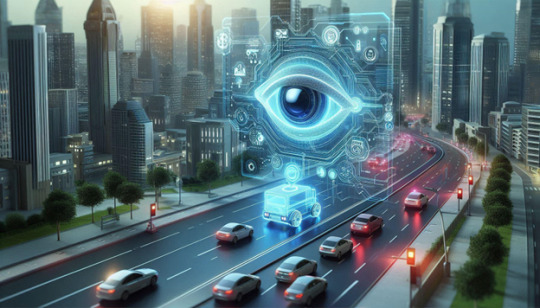
Use the coupon code NEWCOURSE25 to get 25% OFF on AI CERT’s certifications. Click here to explore all the courses and enroll today.
These certifications provide the expertise needed to succeed in AI-driven sectors of autonomous vehicles and smart cities.
Conclusion
The role of AI in autonomous vehicles and smart cities is transformative, offering immense potential to enhance urban living, improve transportation, and promote sustainability. As AI technologies continue to evolve, we are moving toward a future where cities are not only smarter but also safer and more efficient. However, realizing the full benefits of AI will require addressing challenges such as data privacy, security, and ethical considerations.
By working collaboratively with governments, technology companies, and residents, cities can harness the power of AI to create a more connected, sustainable, and livable urban environment for generations to come.
Ready to take the next step in your AI journey? Reach out to us today and let’s unlock the future together!
#top10certifications#professionaldevelopment#careeradvancement#careergrowth#techcertifications#explore#inspiration#certificationguide#reblogs#creativity
0 notes